Current Ph.D. Students
-
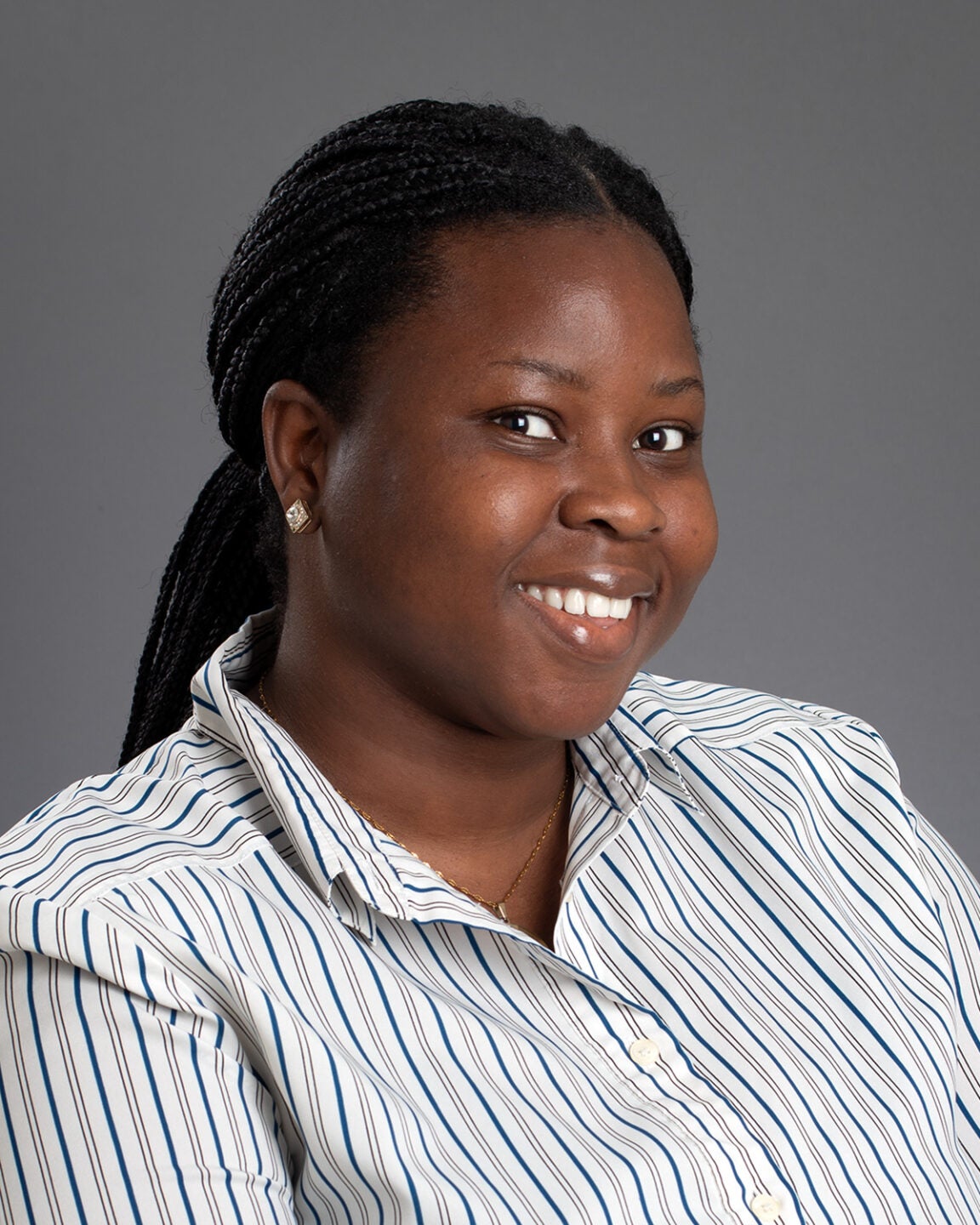
Oluwaseyi Akinola
Ph.D. Student
Advisor: Dr. Laxman Mainali, Department of Physics
Cohort 13Advisor: Dr. Laxman Mainali, Department of Physics
-
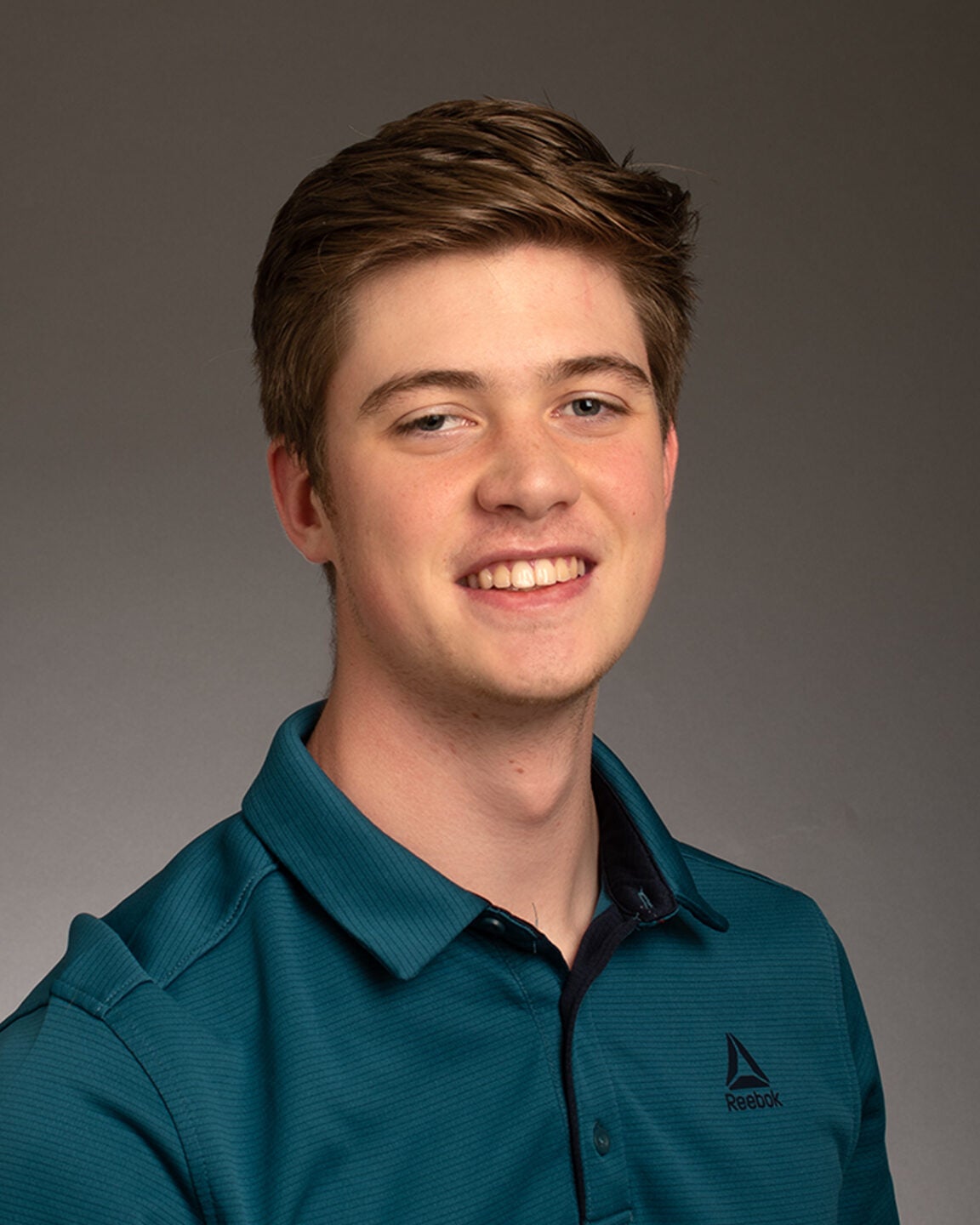
Dawson Bell
Ph.D. Student
Co-Advisors: Dr. Konrad Meister, Department of Chemistry and Biochemistry & Dr. Olivier Andreussi, Department of Chemistry and Biochemistry
Cohort 12Co-Advisors: Dr. Konrad Meister, Department of Chemistry and Biochemistry & Dr. Olivier Andreussi, Department of Chemistry and Biochemistry
-
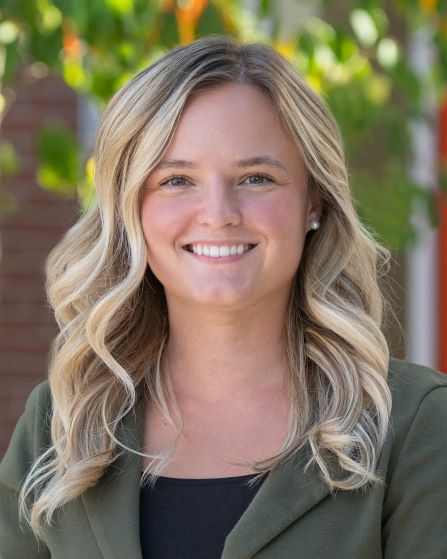
Hailey Burgoyne
Ph.D. Student
Advisor: Dr. David Estrada, Micron School of Materials Science and Engineering
My research focuses on the growth of human mesenchymal stem cells (hMSCs) on two-dimensional materials like Ti₃C₂Tₓ MXenes and graphene. I synthesize these materials using various methods to create different porosities and surface features. The goal is to understand how their chemical and physical properties affect hMSC proliferation and differentiation. This work has important applications in tissue regeneration and chronic wound healing.
Cohort 12Advisor: Dr. David Estrada, Micron School of Materials Science and Engineering
My research focuses on the growth of human mesenchymal stem cells (hMSCs) on two-dimensional materials like Ti₃C₂Tₓ MXenes and graphene. I synthesize these materials using various methods to create different porosities and surface features. The goal is to understand how their chemical and physical properties affect hMSC proliferation and differentiation. This work has important applications in tissue regeneration and chronic wound healing.
-
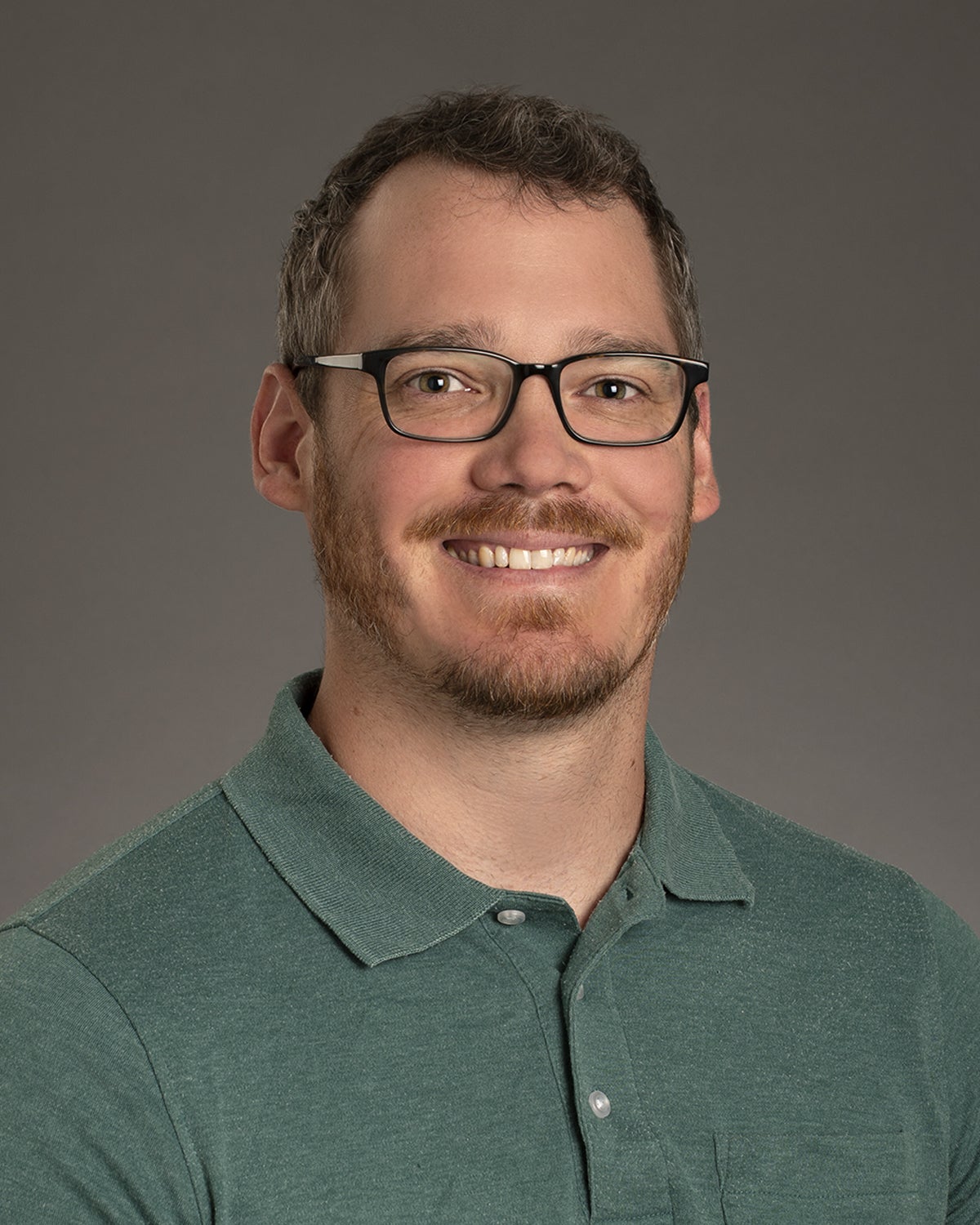
Joseph Collins
Ph.D. Candidate
Advisor: Dr. Owen McDougal, Department of Chemistry & Biochemistry
Bovine milk whey proteins are extracted during milk processing and go on to be used as food ingredients, nutritional supplements, and bioactive therapeutics. In 2023 global whey production passed 200 million tons and generated a market worth 21 billion dollars. Currently, there is no rapid, non-destructive method to quantify whey proteins in native milk. Our lab works to solve this by pairing advanced computational analysis methods like machine learning and artificial intelligence with mid-infrared spectroscopy to quantify high-value whey proteins in milk.
Cohort 8Advisor: Dr. Owen McDougal, Department of Chemistry & Biochemistry
Bovine milk whey proteins are extracted during milk processing and go on to be used as food ingredients, nutritional supplements, and bioactive therapeutics. In 2023 global whey production passed 200 million tons and generated a market worth 21 billion dollars. Currently, there is no rapid, non-destructive method to quantify whey proteins in native milk. Our lab works to solve this by pairing advanced computational analysis methods like machine learning and artificial intelligence with mid-infrared spectroscopy to quantify high-value whey proteins in milk.
-

Madison Dirks
Ph.D. Candidate
Advisor: Dr. Owen McDougal, Department of Chemistry & Biochemistry
My research involves method development and comparison for measuring dairy protein glycosylation. Within the dairy industry there is a need for standard methods to determine the amount of O-linked glycosylation on proteins. The sugar content varies with processing and the milk source, and those sugars directly affect product quality. Currently, I am focused on quantifying the amount of sialic acid found on the bioactive protein glycomacropeptide.
Cohort 10Advisor: Dr. Owen McDougal, Department of Chemistry & Biochemistry
My research involves method development and comparison for measuring dairy protein glycosylation. Within the dairy industry there is a need for standard methods to determine the amount of O-linked glycosylation on proteins. The sugar content varies with processing and the milk source, and those sugars directly affect product quality. Currently, I am focused on quantifying the amount of sialic acid found on the bioactive protein glycomacropeptide.
-
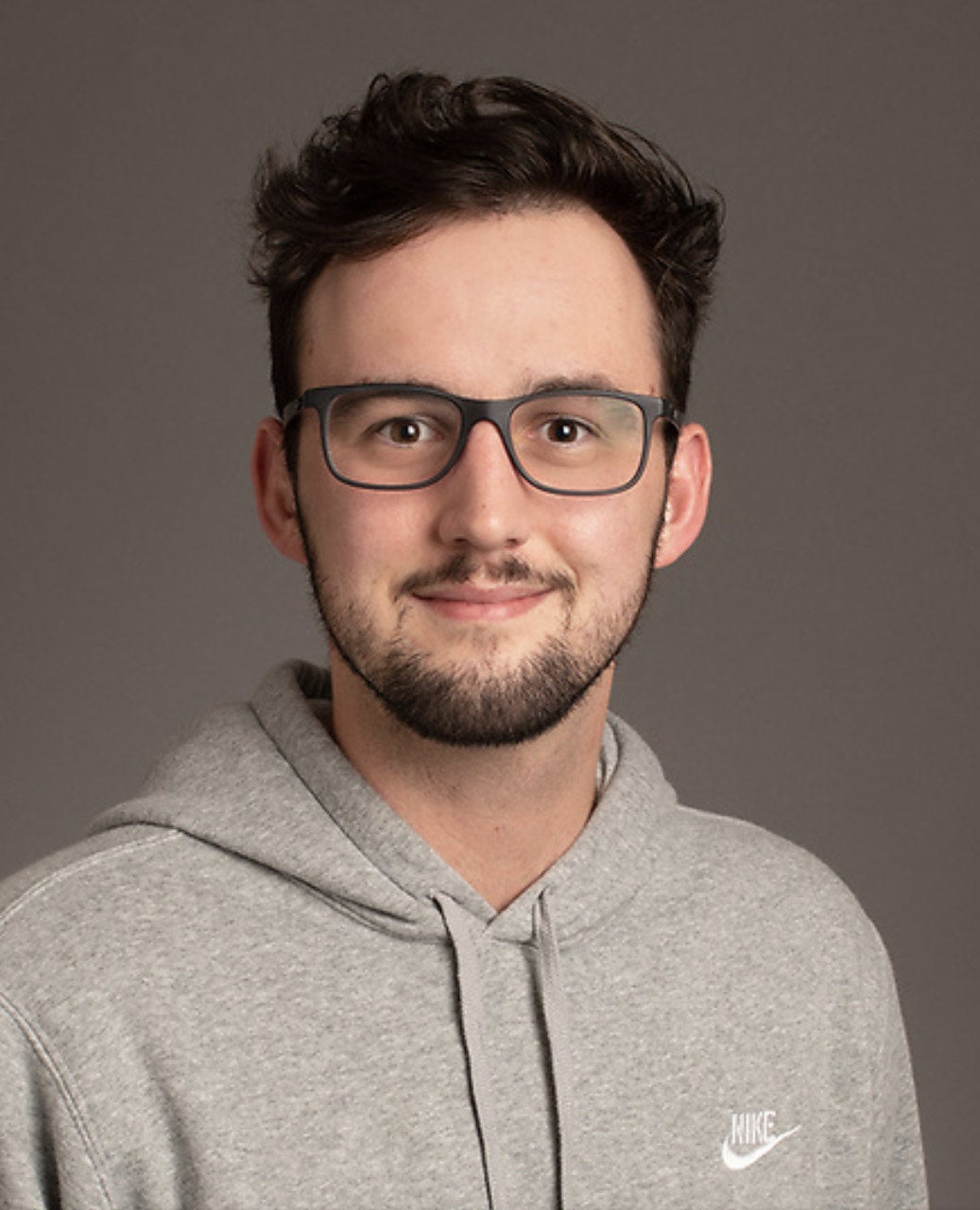
Jake Doyle
Ph.D. Candidate
Advisor: Dr. Javier Ochoa-Repáraz, Department of Biological Sciences
I work with a mouse model of Multiple Sclerosis (Experimental Autoimmune Encephalomyelitis or EAE), examining how the microbiome alters the immune response in the brain and gut. I focus on how miR-155 (microRNA) can alter gut epithelium integrity and immune cell activation/activity in the brain and how it alters the gut microbiome in EAE.
Cohort 11Advisor: Dr. Javier Ochoa-Repáraz, Department of Biological Sciences
I work with a mouse model of Multiple Sclerosis (Experimental Autoimmune Encephalomyelitis or EAE), examining how the microbiome alters the immune response in the brain and gut. I focus on how miR-155 (microRNA) can alter gut epithelium integrity and immune cell activation/activity in the brain and how it alters the gut microbiome in EAE.
-

Terrell Engmann
Ph.D. Candidate
Advisor: Dr. Cheryl Jorcyk, Department of Biological Sciences
Metastatic breast cancer has a 30% five-year survival rate and disproportionately affects Black women. I work to understand the molecular pathways that start the process of metastasis, particularly through studying the interactions between signaling pathways in cancer. I am currently creating and using gene edited cancer cell lines to determine outcomes in pro-inflammatory molecular signaling pathways.
Cohort 9Advisor: Dr. Cheryl Jorcyk, Department of Biological Sciences
Metastatic breast cancer has a 30% five-year survival rate and disproportionately affects Black women. I work to understand the molecular pathways that start the process of metastasis, particularly through studying the interactions between signaling pathways in cancer. I am currently creating and using gene edited cancer cell lines to determine outcomes in pro-inflammatory molecular signaling pathways.
-

Rosemary Eufemio
Ph.D. Candidate
Advisor: Dr. Konrad Meister, Department of Chemistry & Biochemistry
Biological ice nucleators (INs) play fundamental roles in everything from atmospheric processes to the survival of freeze-tolerant organisms like lichens. Despite their importance in nature, the identity, structure, and working mechanisms of INs remain largely unknown. My research centers on investigating the functions and applications of the biomolecules that enable lichens’ ice nucleating capabilities.
Cohort 11Advisor: Dr. Konrad Meister, Department of Chemistry & Biochemistry
Biological ice nucleators (INs) play fundamental roles in everything from atmospheric processes to the survival of freeze-tolerant organisms like lichens. Despite their importance in nature, the identity, structure, and working mechanisms of INs remain largely unknown. My research centers on investigating the functions and applications of the biomolecules that enable lichens’ ice nucleating capabilities.
-

Maria Figueroa-Rosado
Ph.D. Candidate
Advisor: Dr. Denise Wingett, Department of Biological Sciences
Nanoparticles have proven useful in the development and delivery of targeted cancer therapeutics due to their unique properties. In our laboratory, zinc oxide nanoparticles (nZnO) have been shown to induce selective cytotoxicity in T-cell lymphomas compared to their non-malignant counterparts. I am currently using Jurkat cells to study the effects of nZnO on the expression of genes and proteins involved in zinc homeostasis.
Cohort 7Advisor: Dr. Denise Wingett, Department of Biological Sciences
Nanoparticles have proven useful in the development and delivery of targeted cancer therapeutics due to their unique properties. In our laboratory, zinc oxide nanoparticles (nZnO) have been shown to induce selective cytotoxicity in T-cell lymphomas compared to their non-malignant counterparts. I am currently using Jurkat cells to study the effects of nZnO on the expression of genes and proteins involved in zinc homeostasis.
-

Maddie Grier
Ph.D. Candidate
Advisor: Dr. Daniel Fologea, Department of Physics
My research focuses on designing and developing analytical methods for the detection and quantification of small molecule pollutants in complex environmental samples. To achieve this, I will adapt the kinetic exclusion assay (KinExA) by employing aptamers and antibodies as biorecognition molecules.
Cohort 11Advisor: Dr. Daniel Fologea, Department of Physics
My research focuses on designing and developing analytical methods for the detection and quantification of small molecule pollutants in complex environmental samples. To achieve this, I will adapt the kinetic exclusion assay (KinExA) by employing aptamers and antibodies as biorecognition molecules.
-
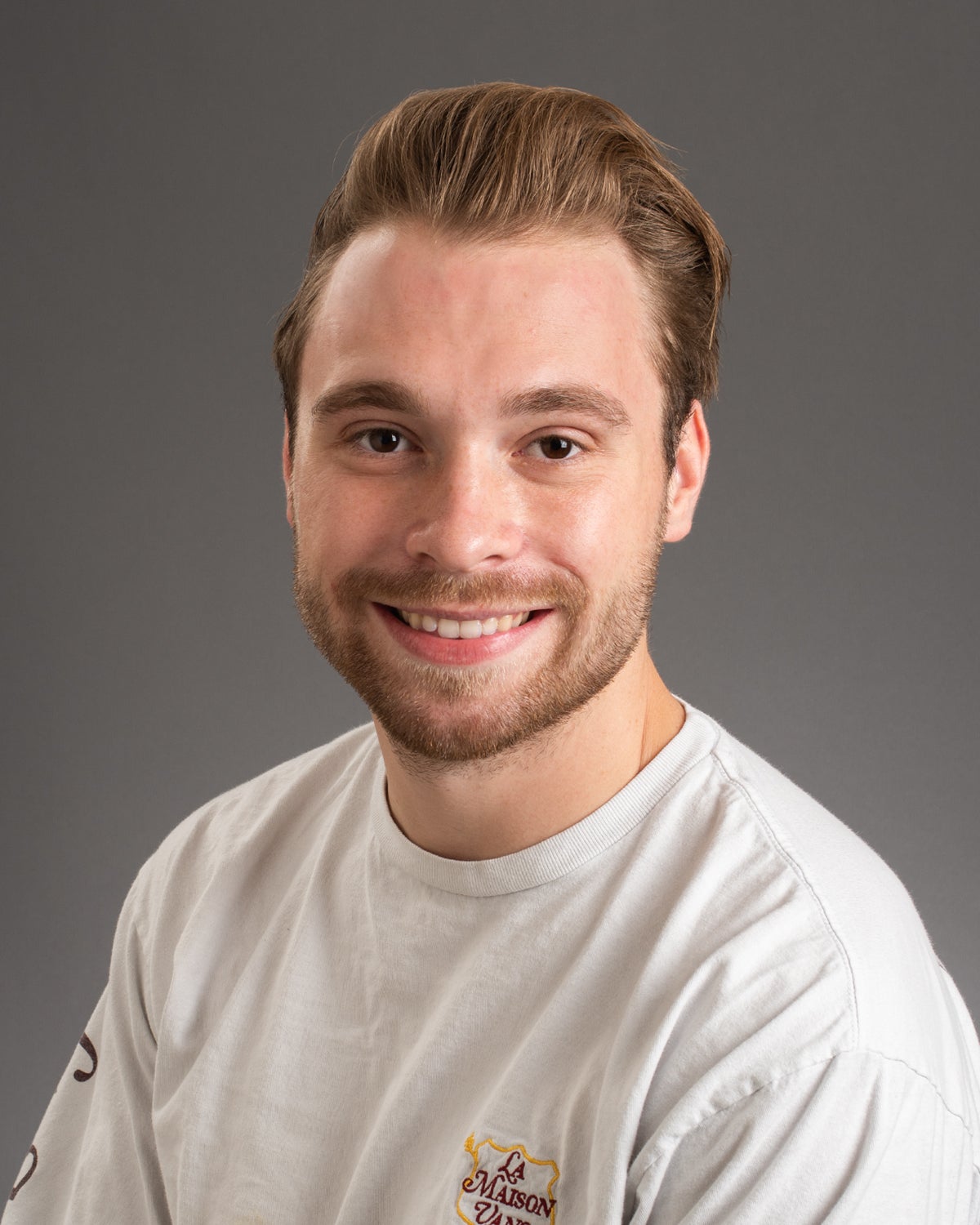
Preston Hazen
Ph.D. Candidate
Advisor: Dr. Laxman Mainali, Department of Physics
The crystallin proteins (α-, β-, and γ-crystallin) make up ~90% of the eye lens proteins and help maintain the lens’s structure and refractivity. However, with age and cataract development, these crystallin proteins can aggregate and form higher molecular weight complexes that can further bind with the lens membrane, consequentially scattering light entering the eye and ultimately impairing vision. My research involves using Electron Paramagnetic Resonance (EPR) to characterize the interactions of these crystallin proteins with the eye lens and analyze the role that the lens lipid and cholesterol composition has on these interactions. Using this information, we hope to develop an improved understanding of the crystallin proteins and their role in the development and progression of cataracts.
Cohort 11Advisor: Dr. Laxman Mainali, Department of Physics
The crystallin proteins (α-, β-, and γ-crystallin) make up ~90% of the eye lens proteins and help maintain the lens’s structure and refractivity. However, with age and cataract development, these crystallin proteins can aggregate and form higher molecular weight complexes that can further bind with the lens membrane, consequentially scattering light entering the eye and ultimately impairing vision. My research involves using Electron Paramagnetic Resonance (EPR) to characterize the interactions of these crystallin proteins with the eye lens and analyze the role that the lens lipid and cholesterol composition has on these interactions. Using this information, we hope to develop an improved understanding of the crystallin proteins and their role in the development and progression of cataracts.
-

Jeremy Herrera-Gutierrez
Ph.D. Candidate
Advisor: Dr. Eric Hayden, Department of Biological Sciences
My research focuses on fluorogenic aptamer design optimization and biosensor development. Fluorogenic aptamers are increasingly being utilized as reporters in vivo due to their detection speed and brightness over more conventional protein reporters. My current focus is improving existing aptazyme-based biosensor systems by implementing several strategies to limit strand displacement induced background fluorescence. This will lead to a better understanding of RNA biosensor design principles and can serve as a platform for novel small molecule biosensors.
Cohort 9Advisor: Dr. Eric Hayden, Department of Biological Sciences
My research focuses on fluorogenic aptamer design optimization and biosensor development. Fluorogenic aptamers are increasingly being utilized as reporters in vivo due to their detection speed and brightness over more conventional protein reporters. My current focus is improving existing aptazyme-based biosensor systems by implementing several strategies to limit strand displacement induced background fluorescence. This will lead to a better understanding of RNA biosensor design principles and can serve as a platform for novel small molecule biosensors.
-

Navdeep Kalkat
Ph.D. Student
Advisor: Dr. Laxman Mainali, Department of Physics
Cohort 12Advisor: Dr. Laxman Mainali, Department of Physics
-

Leslie Kendrick
Ph.D. Candidate
Advisor: Dr. Denise Wingett, Department of Biological Sciences
My research focus is on detection methods of post-concussion serum and plasma proteins in conjunction with post-concussion symptom resolution across the recovery process. With millions of youth participating in sports each year, rates of resultant concussion are high as is the cost of care burden. Identifying a protein detection method with higher sensitivity/specificity than conventional methods may prove useful to better diagnose concussion, reduce risk of premature return to play, and improve potential for finding correlations between blood proteins and symptom resolution.
Cohort 7Advisor: Dr. Denise Wingett, Department of Biological Sciences
My research focus is on detection methods of post-concussion serum and plasma proteins in conjunction with post-concussion symptom resolution across the recovery process. With millions of youth participating in sports each year, rates of resultant concussion are high as is the cost of care burden. Identifying a protein detection method with higher sensitivity/specificity than conventional methods may prove useful to better diagnose concussion, reduce risk of premature return to play, and improve potential for finding correlations between blood proteins and symptom resolution.
-
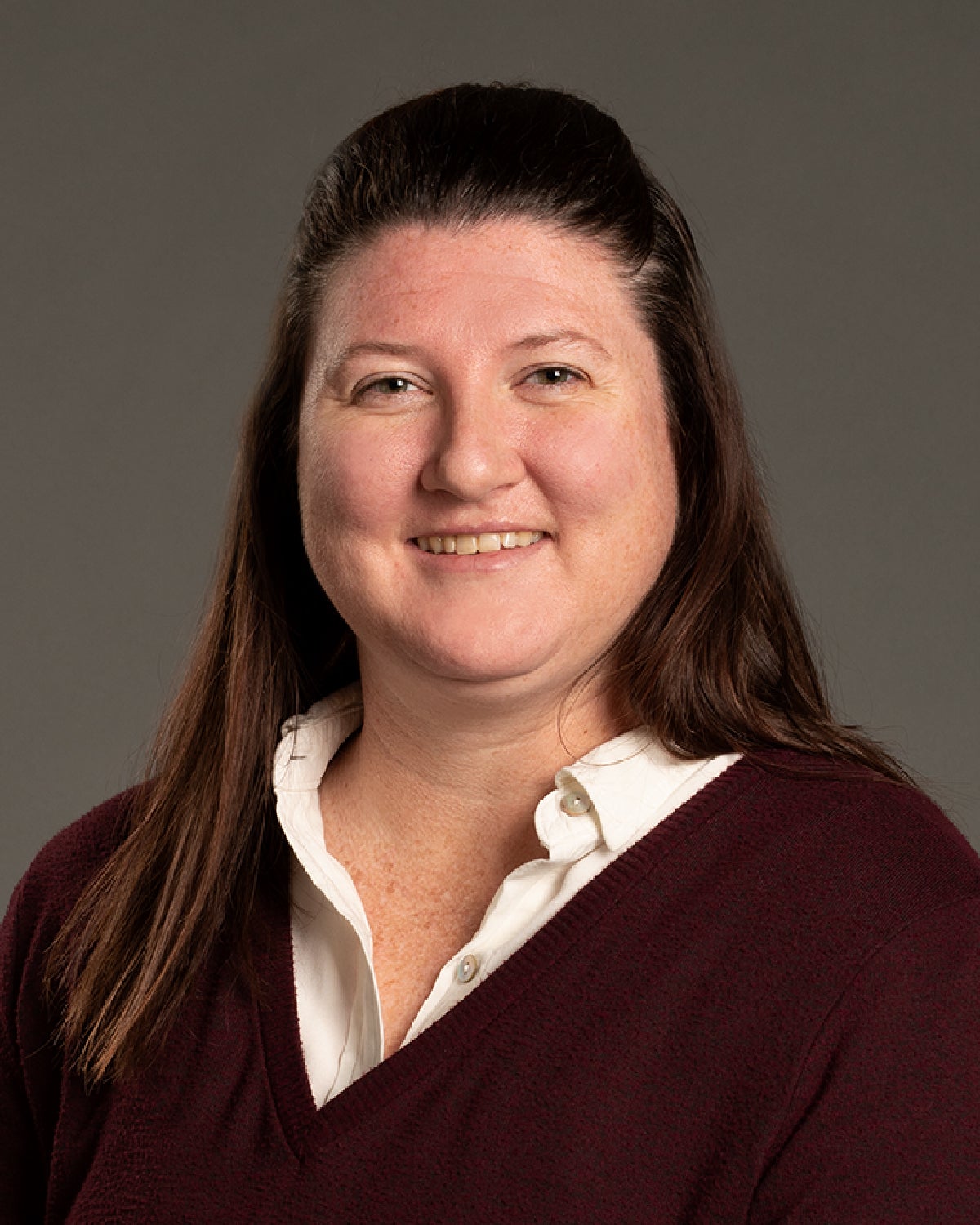
Gretchen Kunz
Ph.D. Candidate
Advisor: Dr. Ken Cornell, Department of Chemistry & Biochemistry
Cohort 9Advisor: Dr. Ken Cornell, Department of Chemistry & Biochemistry
-

McKenna Lamb
Ph.D. Student
Advisor: Dr. Jay Radke, Boise VA Medical Center
Cohort 12Advisor: Dr. Jay Radke, Boise VA Medical Center
-
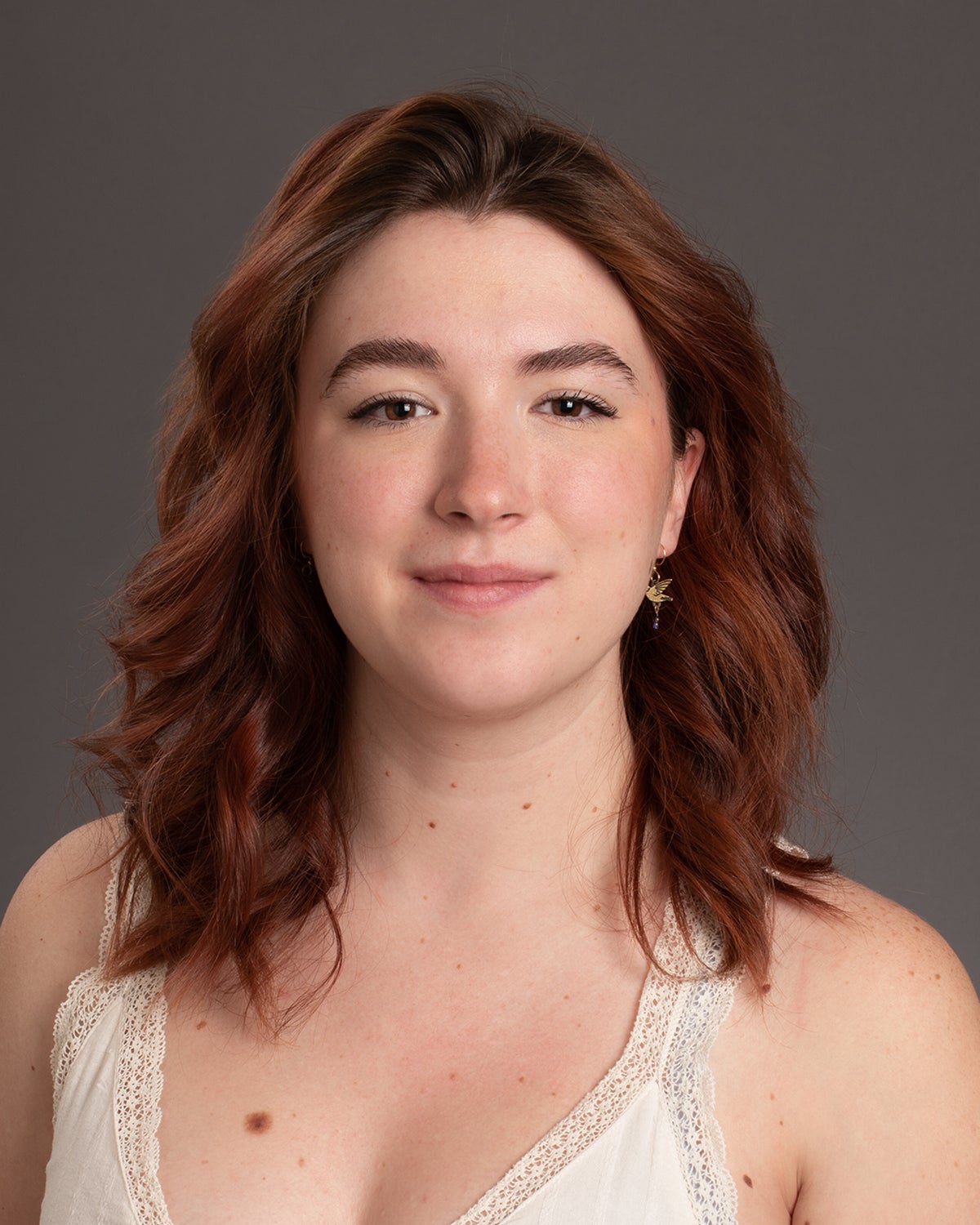
Katie Matteo
Ph.D. Candidate
Advisor: Dr. Eric Hayden, Department of Biological Sciences
Catalytic RNA molecules known as ribozymes help reinforce the RNA World hypothesis, suggesting that RNA molecules were the first forms of early life on earth. However, one drawback is that an RNA molecule capable of accurately replicating its own sequence has yet to be discovered. My research focuses on developing generative predictive models utilizing machine learning and ribozyme libraries, to better understand the relationship between genotype and phenotype of RNA molecules.
Cohort 11Advisor: Dr. Eric Hayden, Department of Biological Sciences
Catalytic RNA molecules known as ribozymes help reinforce the RNA World hypothesis, suggesting that RNA molecules were the first forms of early life on earth. However, one drawback is that an RNA molecule capable of accurately replicating its own sequence has yet to be discovered. My research focuses on developing generative predictive models utilizing machine learning and ribozyme libraries, to better understand the relationship between genotype and phenotype of RNA molecules.
-
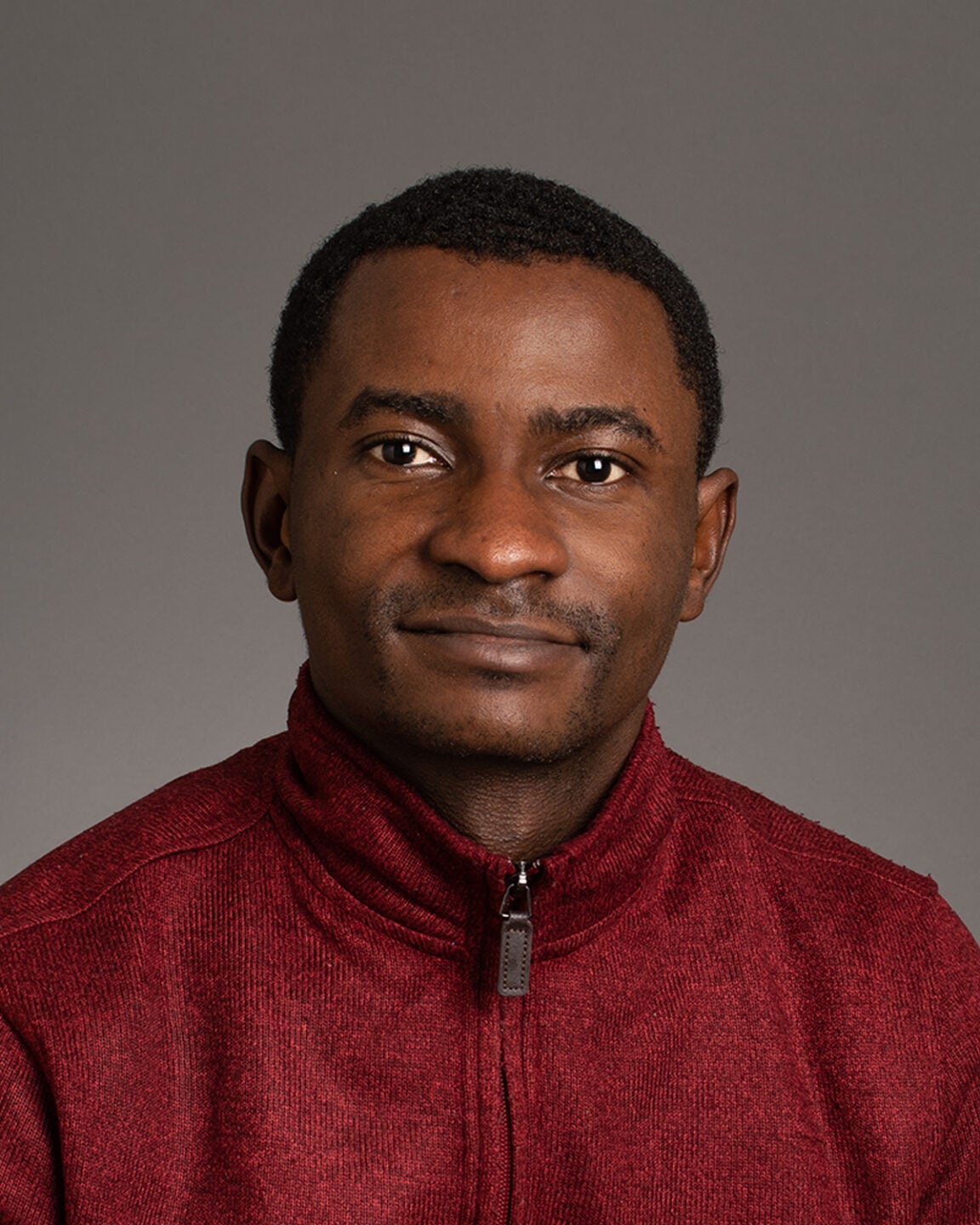
David Oke
Ph.D. Candidate
Advisor: Dr. Allan Albig, Department of Biological Sciences
Notch Signaling is an evolutionarily conserved signaling pathway in all eukaryotic cells which controls cell development. Post translational modifications (PTMs) of Notch receptors play a role in cancer malignancy but this is yet to be fully explored. I am using in vitro cell culture models to study how phosphorylation of Notch intracellular domain by Src Kinase impacts malignancy in cancer cells. These findings will help to provide a potential therapeutic target in cancer cells.
Cohort 11Advisor: Dr. Allan Albig, Department of Biological Sciences
Notch Signaling is an evolutionarily conserved signaling pathway in all eukaryotic cells which controls cell development. Post translational modifications (PTMs) of Notch receptors play a role in cancer malignancy but this is yet to be fully explored. I am using in vitro cell culture models to study how phosphorylation of Notch intracellular domain by Src Kinase impacts malignancy in cancer cells. These findings will help to provide a potential therapeutic target in cancer cells.
-
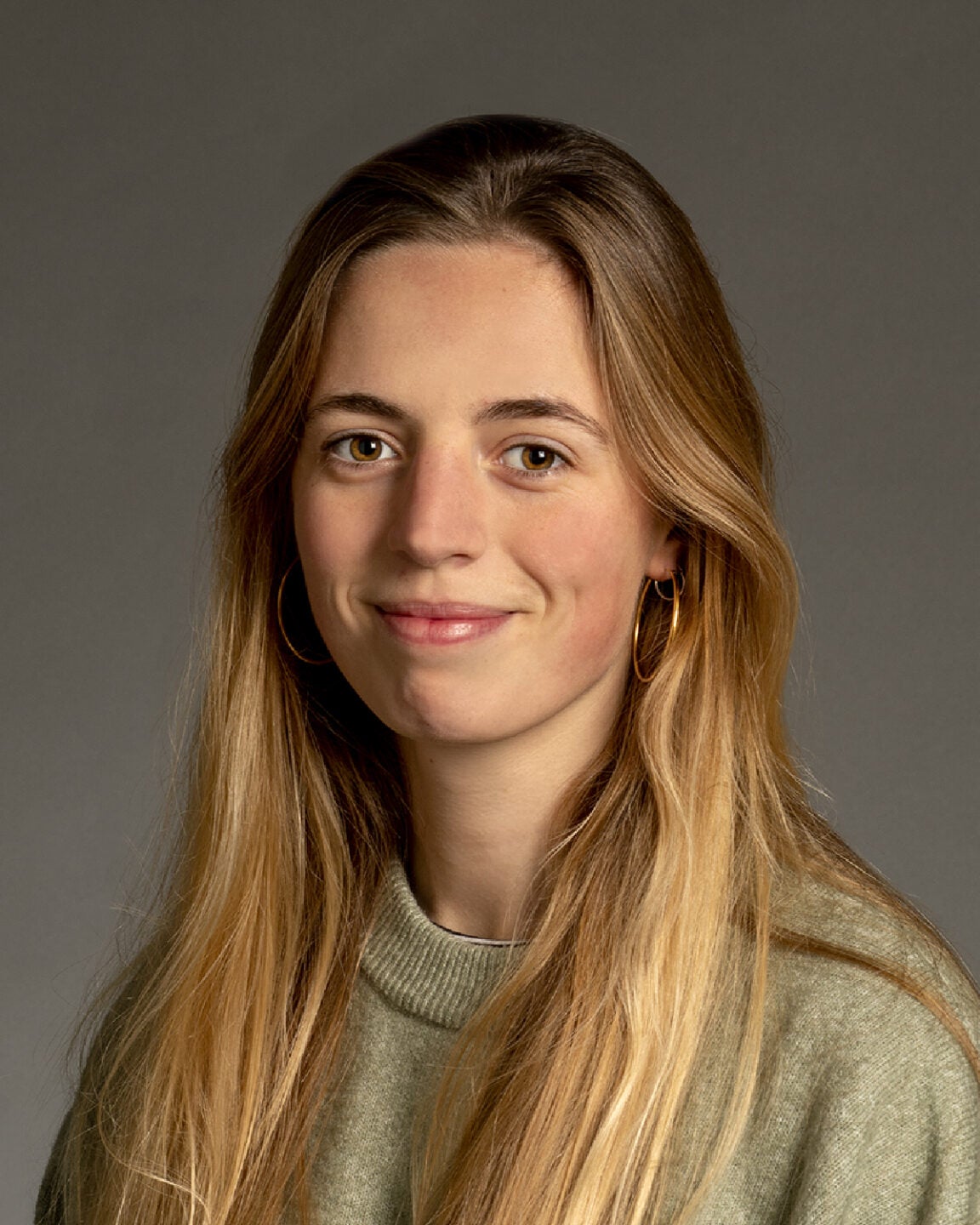
Maria Pou
Ph.D. Candidate
Advisor: Dr. Cheryl Jorcyk, Department of Biological Sciences
Cohort 10Advisor: Dr. Cheryl Jorcyk, Department of Biological Sciences
-

David Pugel
Ph.D. Student
Advisor: Dr. Brad Morrison, Department of Biological Sciences
My research focuses on understanding the contributions that endothelial cells, the cells that
line blood vessels, make to other tissues throughout the body. Studies have reported the
successful transduction of transgenes into many tissue types through intravenous injection, yet
no mechanism has been defined. I employ various cell lineage tracing techniques to determine
which tissues endothelial cells contribute to through transdifferentiation and/or extracellular
vesicle emission in vivo. Our goal is to have a comprehensive understanding of the affected
downstream cell types so we can maximize the therapeutic potential of genetically editing the
vasculature.Cohort 12Advisor: Dr. Brad Morrison, Department of Biological Sciences
My research focuses on understanding the contributions that endothelial cells, the cells that
line blood vessels, make to other tissues throughout the body. Studies have reported the
successful transduction of transgenes into many tissue types through intravenous injection, yet
no mechanism has been defined. I employ various cell lineage tracing techniques to determine
which tissues endothelial cells contribute to through transdifferentiation and/or extracellular
vesicle emission in vivo. Our goal is to have a comprehensive understanding of the affected
downstream cell types so we can maximize the therapeutic potential of genetically editing the
vasculature. -
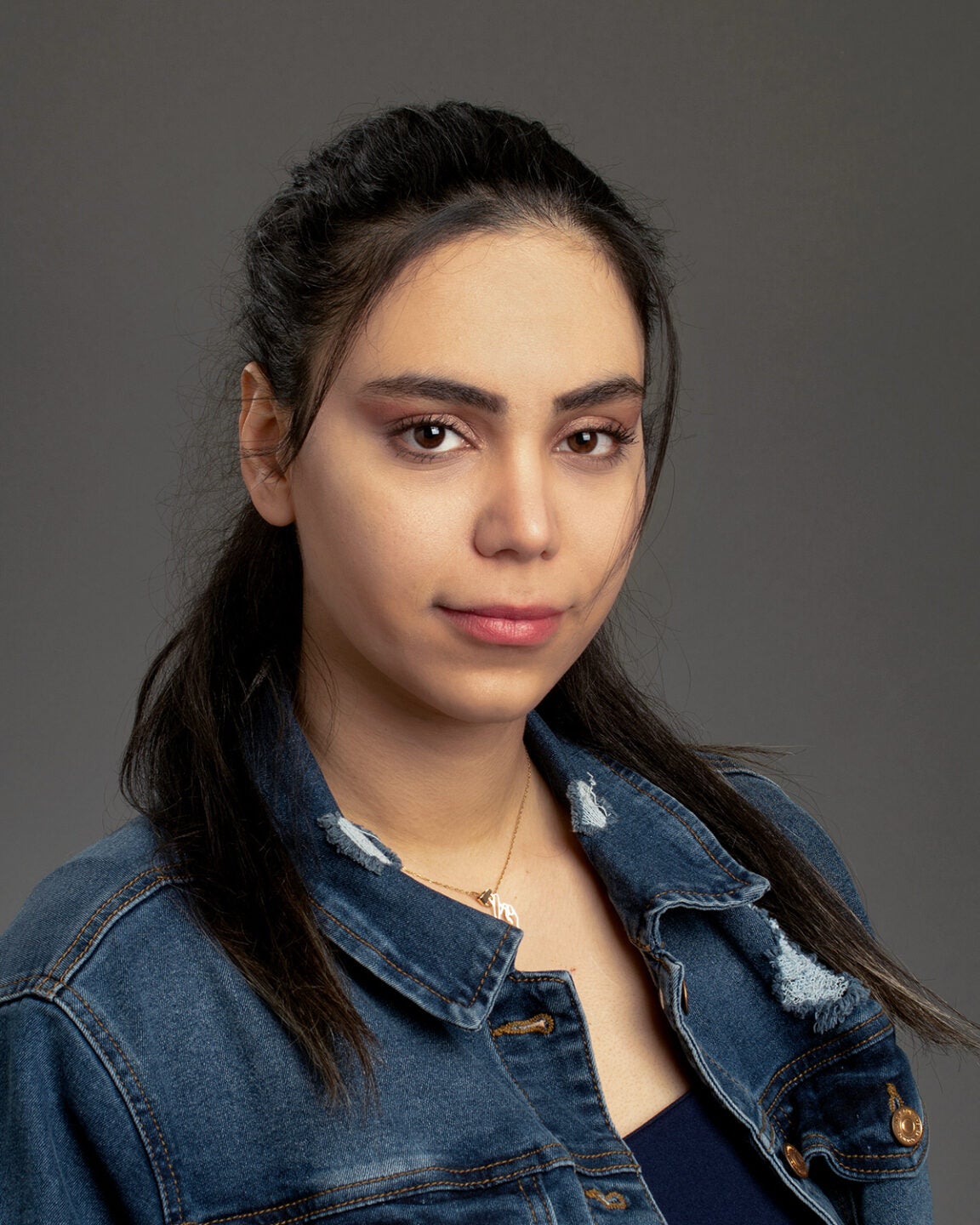
Ghazaleh Rajabi
Ph.D. Student
Advisor: Dr. David Estrada, Micron School of Materials Science and Engineering
My research focuses on the development of engineered biomaterials with the potential to facilitate cardiac tissue regeneration following myocardial infarction. I am presently involved in developing conductive hydrogel-based cardiac patches from two-dimensional materials, i.e., MXenes, with mesenchymal stem cells (MSCs) for improved electrical integration and biological rejuvenation. This work is important because it proposes a hopeful strategy for the restoration of cardiac function in patients with limited therapeutic alternatives by a combination of material science, stem cell therapy, and regenerative medicine.
Cohort 12Advisor: Dr. David Estrada, Micron School of Materials Science and Engineering
My research focuses on the development of engineered biomaterials with the potential to facilitate cardiac tissue regeneration following myocardial infarction. I am presently involved in developing conductive hydrogel-based cardiac patches from two-dimensional materials, i.e., MXenes, with mesenchymal stem cells (MSCs) for improved electrical integration and biological rejuvenation. This work is important because it proposes a hopeful strategy for the restoration of cardiac function in patients with limited therapeutic alternatives by a combination of material science, stem cell therapy, and regenerative medicine.
-
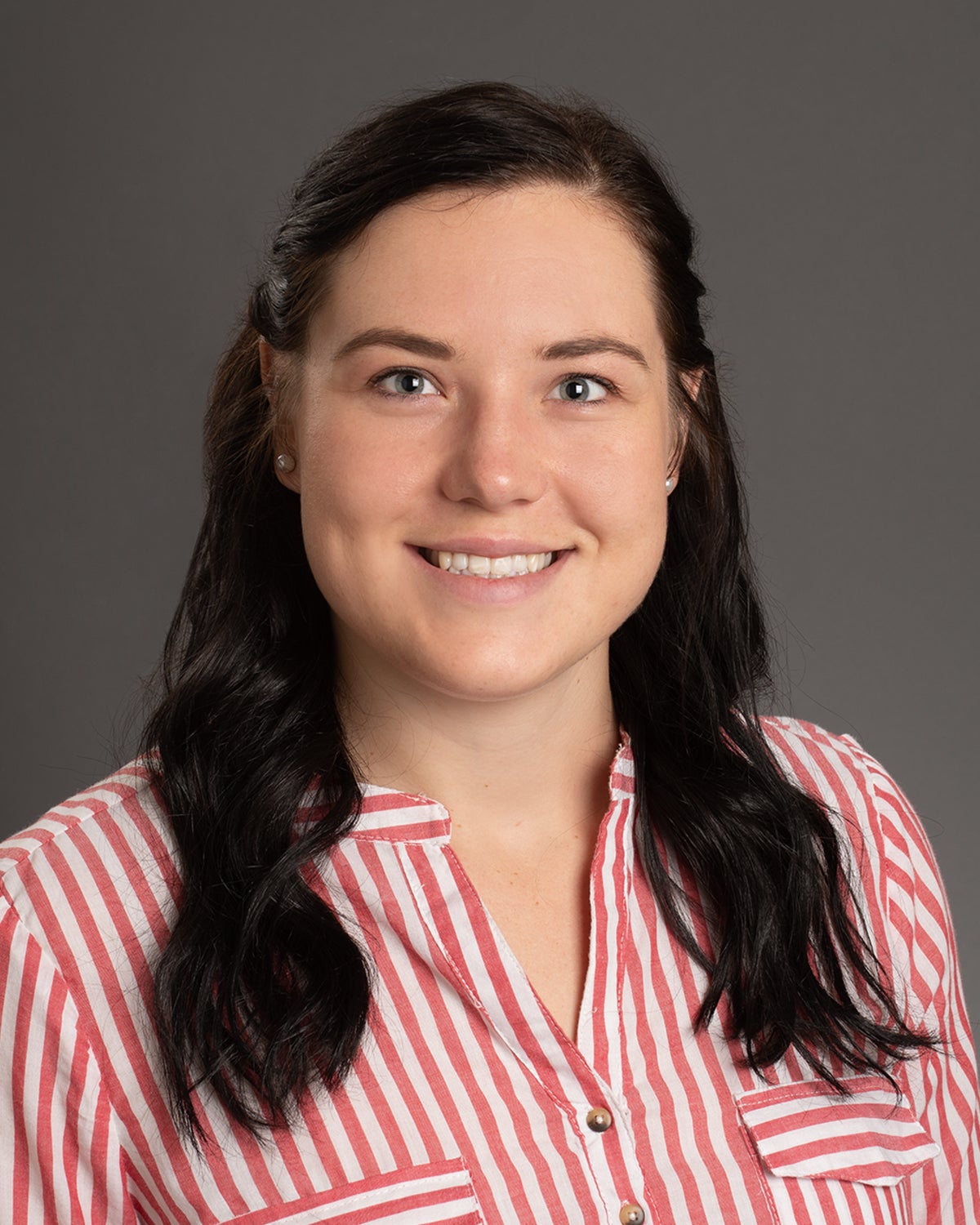
Mia Toronto
Ph.D. Candidate
Advisor: Dr. Owen McDougal, Department of Chemistry & Biochemistry
My research looks at the degradation of bioactive ingredients (more specifically vitamin C, vitamin B5, vitamin B9, and iron) in protein bars and powder. I plan to develop a kinetic model to predict the degradation of these bioactive ingredients using extraction techniques from the different matrices and quantification through primarily HPLC (high-performance liquid chromatography).
Cohort 11Advisor: Dr. Owen McDougal, Department of Chemistry & Biochemistry
My research looks at the degradation of bioactive ingredients (more specifically vitamin C, vitamin B5, vitamin B9, and iron) in protein bars and powder. I plan to develop a kinetic model to predict the degradation of these bioactive ingredients using extraction techniques from the different matrices and quantification through primarily HPLC (high-performance liquid chromatography).
-
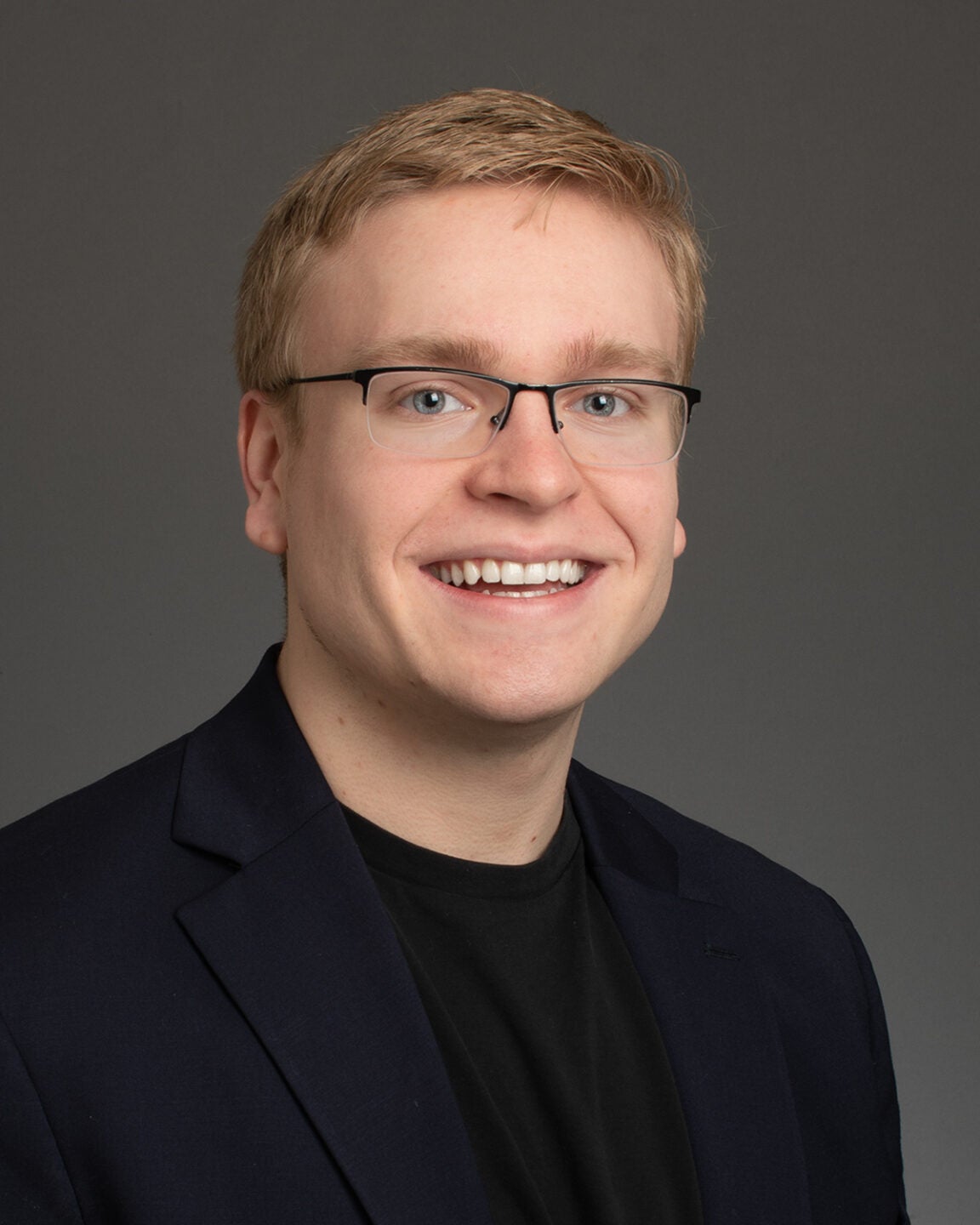
Daniel Robertson
Ph.D. Student
Advisor: Dr. Daniel Fologea, Department of Physics
My research focuses on preparation and characterization of liposomes, loading with drug simulators by active and passive methods, and load assessment by fluorescence spectroscopy; liposomes provide a valuable tool for medical applications. My research also involves work with bilayer lipid membranes; these include electrophysiology experiments on lysenin channels and how hypo-osmotic stress and pore forming toxins will adjust the lipid order in red blood cells’ membranes. Investigation into the biophysical and transportation properties of lipid bilayers is essential in understanding key cellular processes.
Cohort 13Advisor: Dr. Daniel Fologea, Department of Physics
My research focuses on preparation and characterization of liposomes, loading with drug simulators by active and passive methods, and load assessment by fluorescence spectroscopy; liposomes provide a valuable tool for medical applications. My research also involves work with bilayer lipid membranes; these include electrophysiology experiments on lysenin channels and how hypo-osmotic stress and pore forming toxins will adjust the lipid order in red blood cells’ membranes. Investigation into the biophysical and transportation properties of lipid bilayers is essential in understanding key cellular processes.
-
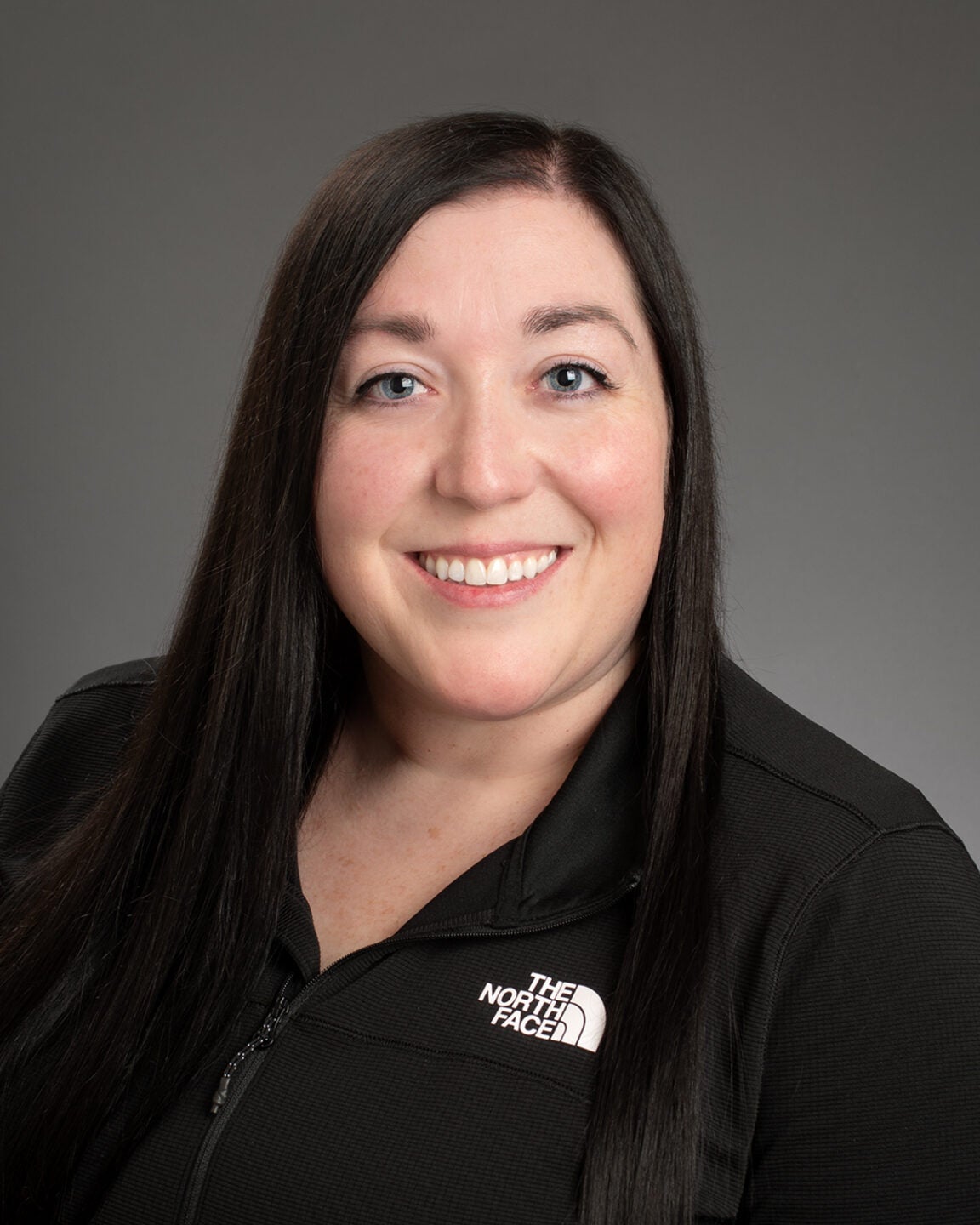
Stephanie Rood
Ph.D. Student
Advisor: Dr. Ken Cornell, Department of Chemistry & Biochemistry
My research focuses on antimicrobial effects of the Cold Atmospheric-Pressure Plasma (CAP) array. I currently work to treat human foodborne illnesses, Escherichia coli and Salmonella enterica, and plant pathogens, Pseudomonas syringae and Fusarium graminearum, on inoculated crop seeds. These pathogens are known to negatively impact crop seed germination (P. syringae and F. graminearum) and cause potentially life-threatening infections when present on seedlings meant for consumption. CAP has been shown to safely and effectively treat a variety of surfaces contaminated by bacteria and fungi. Reactive oxygen and nitrogen species (RONS) generated by CAP are credited for the efficacy of this treatment by way of inducing chemical changes to nucleic acids, lipids and proteins. Additionally, I will investigate the molecular mechanisms of these chemical changes induced by CAP treatment.
Cohort 12Advisor: Dr. Ken Cornell, Department of Chemistry & Biochemistry
My research focuses on antimicrobial effects of the Cold Atmospheric-Pressure Plasma (CAP) array. I currently work to treat human foodborne illnesses, Escherichia coli and Salmonella enterica, and plant pathogens, Pseudomonas syringae and Fusarium graminearum, on inoculated crop seeds. These pathogens are known to negatively impact crop seed germination (P. syringae and F. graminearum) and cause potentially life-threatening infections when present on seedlings meant for consumption. CAP has been shown to safely and effectively treat a variety of surfaces contaminated by bacteria and fungi. Reactive oxygen and nitrogen species (RONS) generated by CAP are credited for the efficacy of this treatment by way of inducing chemical changes to nucleic acids, lipids and proteins. Additionally, I will investigate the molecular mechanisms of these chemical changes induced by CAP treatment.
-
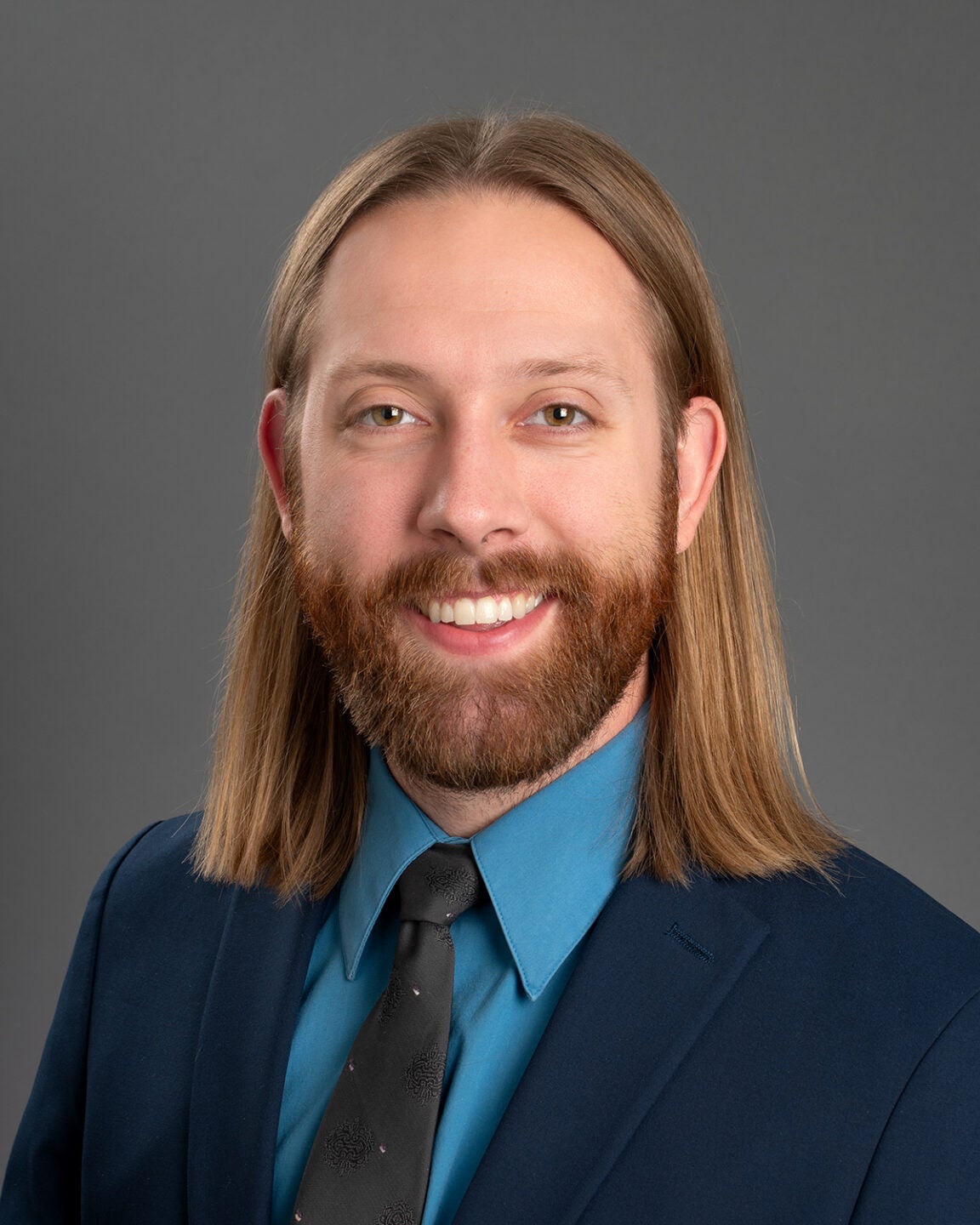
Caleb Renshaw
Ph.D. Student
Advisor: Dr. Owen McDougal, Department of Chemistry & Biochemistry
My research focuses on improving the efficiency of industrial potato processing. Specifically, I am looking to design a processing pathway that can extract and refine both starch and protein from raw potatoes for use as industrial food ingredients. Current potato starch production procedures result in the generation of wastewater containing the potato protein, which we hope to recover and refine as a high value product that would otherwise go to waste. We are exploring the use of PEF (pulsed electric field) and sonication for improved extraction and recovery of the materials. This will be followed by successive filtration, precipitation, and purification steps to refine the products. The goal is to create a process flow that is economically viable at the industrial scale and to partner with local businesses to implement it.
Cohort 13Advisor: Dr. Owen McDougal, Department of Chemistry & Biochemistry
My research focuses on improving the efficiency of industrial potato processing. Specifically, I am looking to design a processing pathway that can extract and refine both starch and protein from raw potatoes for use as industrial food ingredients. Current potato starch production procedures result in the generation of wastewater containing the potato protein, which we hope to recover and refine as a high value product that would otherwise go to waste. We are exploring the use of PEF (pulsed electric field) and sonication for improved extraction and recovery of the materials. This will be followed by successive filtration, precipitation, and purification steps to refine the products. The goal is to create a process flow that is economically viable at the industrial scale and to partner with local businesses to implement it.
-
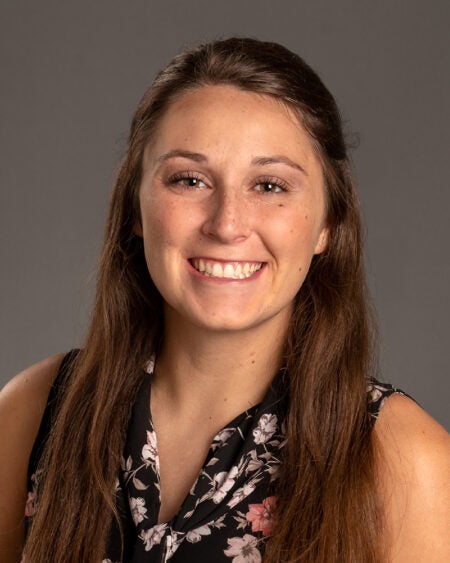
Elizabeth Ryan
Ph.D. Candidate
Advisor: Dr. Owen McDougal, Department of Chemistry & Biochemistry
My research focuses on the use of pulsed electric field (PEF) technology in the dairy industry. Currently, I am working on the use of PEF application to whey proteins to improve the efficiency of industrial spray drying for less time, energy, and water usage. Functional property and protein structure analysis will determine the impact of PEF technology on whey proteins and powder production.
Cohort 10Advisor: Dr. Owen McDougal, Department of Chemistry & Biochemistry
My research focuses on the use of pulsed electric field (PEF) technology in the dairy industry. Currently, I am working on the use of PEF application to whey proteins to improve the efficiency of industrial spray drying for less time, energy, and water usage. Functional property and protein structure analysis will determine the impact of PEF technology on whey proteins and powder production.
-

Saborni Sarker
Ph.D. Student
Advisor: Dr. Allan Albig, Department of Biological Sciences
Biomolecular condensates are membrane-less organelles that form through liquid-liquid phase separation and play crucial roles in cellular organization, stress response, gene regulation, and signaling pathways. In our lab, we explore the connection between the Notch signaling pathway and nuclear condensate localization. I will investigate the interaction of Notch coactivators MAML2 and MAML3 with Notch proteins in condensate formation. Additionally, I will explore the interplay between DDX5, Notch proteins, and a long non-coding RNA(SRA), where DDX5 interacts with Notch, and SRA interacts with both DDX5 and Notch, forming a regulatory network in Notchosome formation. Understanding these interactions will provide critical insights into the role of phase-separated condensates in Notch signaling and their broader implications in cellular function and disease.
Cohort 13Advisor: Dr. Allan Albig, Department of Biological Sciences
Biomolecular condensates are membrane-less organelles that form through liquid-liquid phase separation and play crucial roles in cellular organization, stress response, gene regulation, and signaling pathways. In our lab, we explore the connection between the Notch signaling pathway and nuclear condensate localization. I will investigate the interaction of Notch coactivators MAML2 and MAML3 with Notch proteins in condensate formation. Additionally, I will explore the interplay between DDX5, Notch proteins, and a long non-coding RNA(SRA), where DDX5 interacts with Notch, and SRA interacts with both DDX5 and Notch, forming a regulatory network in Notchosome formation. Understanding these interactions will provide critical insights into the role of phase-separated condensates in Notch signaling and their broader implications in cellular function and disease.
-
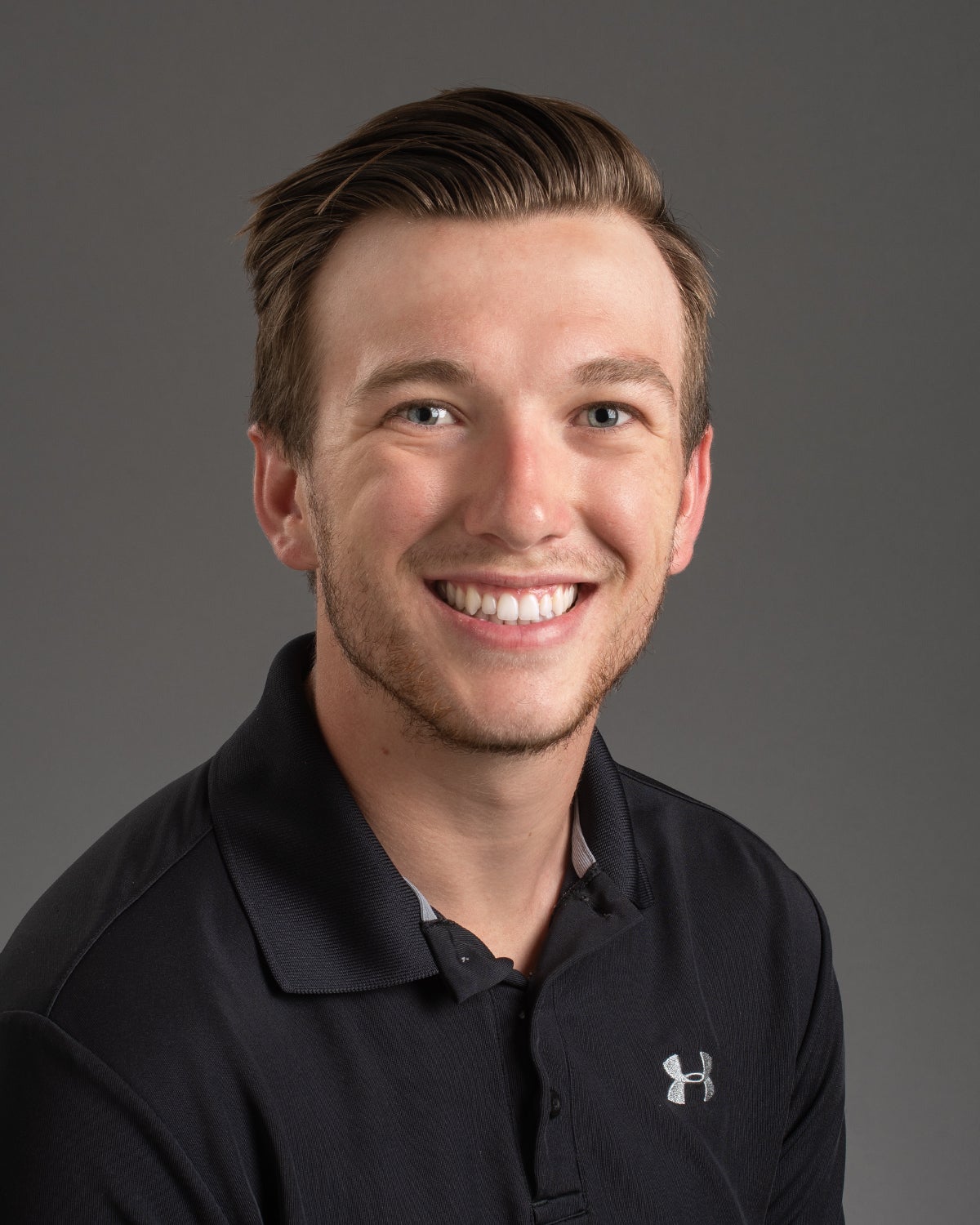
Sean Schumacher
Ph.D. Candidate
Advisor: Dr. Javier Ochoa-Repáraz, Department of Biological Sciences
My research involves using in-vitro and in-vivo models to analyze natural compounds and their effects on the inflammasome in chronic disease. Currently, we are analyzing the effects of natural isoprenoids on murine colitis, and if these compounds affect immune cell gene expression and tissue integrity. We are also looking at these natural isoprenoids and their effects on murine derived macrophages by seeing how these compounds affect reactive oxygen species (ROS) in pro-inflammatory environments.
Cohort 11Advisor: Dr. Javier Ochoa-Repáraz, Department of Biological Sciences
My research involves using in-vitro and in-vivo models to analyze natural compounds and their effects on the inflammasome in chronic disease. Currently, we are analyzing the effects of natural isoprenoids on murine colitis, and if these compounds affect immune cell gene expression and tissue integrity. We are also looking at these natural isoprenoids and their effects on murine derived macrophages by seeing how these compounds affect reactive oxygen species (ROS) in pro-inflammatory environments.
-
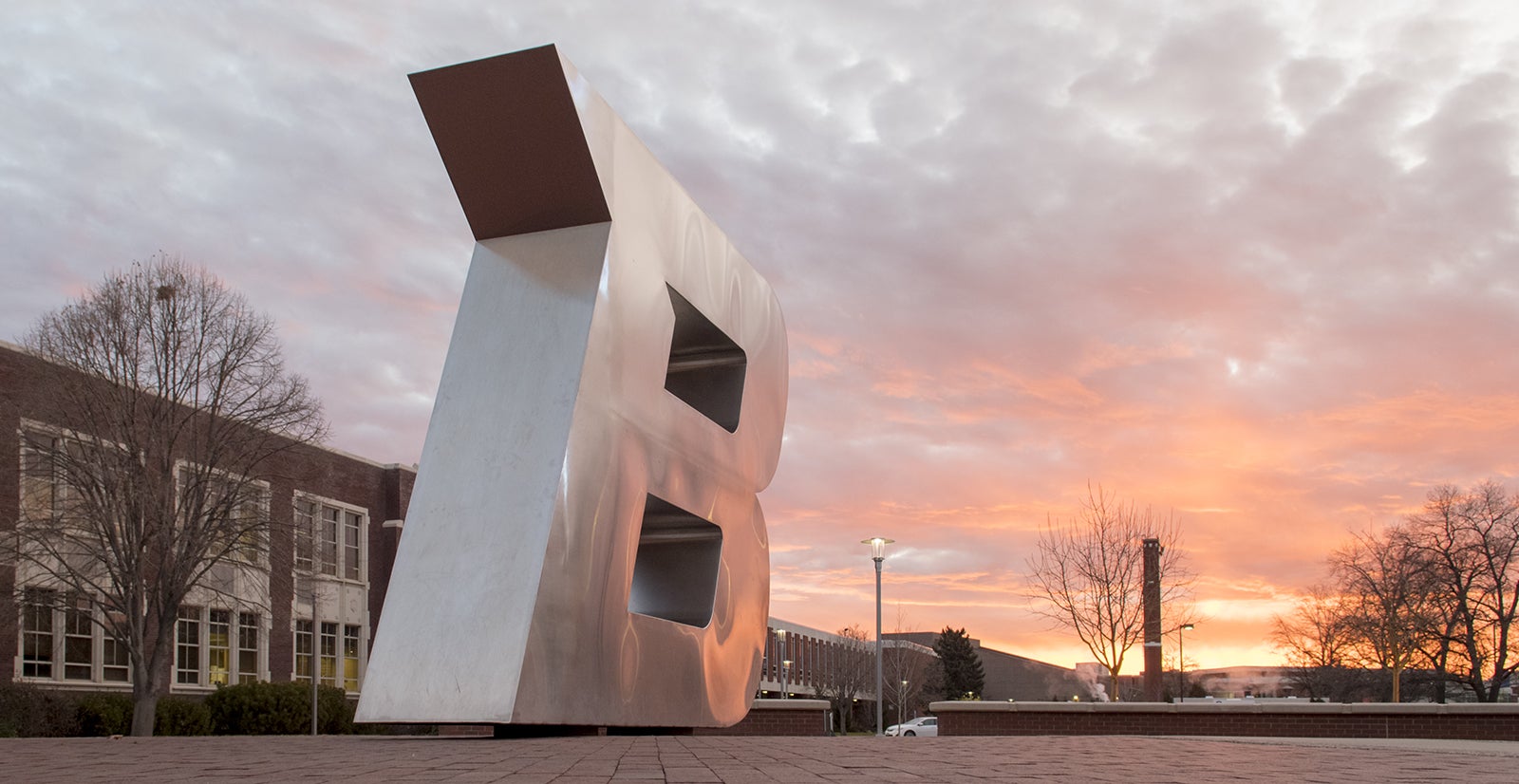
Kaden Shaw
Ph.D. Student
Advisor: Dr. Konrad Meister, Department of Chemistry & Biochemistry
I am working in the Bioice lab, using computational tools such as Alpha Fold, Molecular Dynamics, and others to find new ice binding proteins. In one project I am working on creating a screening technique to find novel ice binding proteins from a large databank of potential proteins. This data bank might be a genome from an organism that is ice active, or just a list of all known proteins.
Cohort 13Advisor: Dr. Konrad Meister, Department of Chemistry & Biochemistry
I am working in the Bioice lab, using computational tools such as Alpha Fold, Molecular Dynamics, and others to find new ice binding proteins. In one project I am working on creating a screening technique to find novel ice binding proteins from a large databank of potential proteins. This data bank might be a genome from an organism that is ice active, or just a list of all known proteins.
-
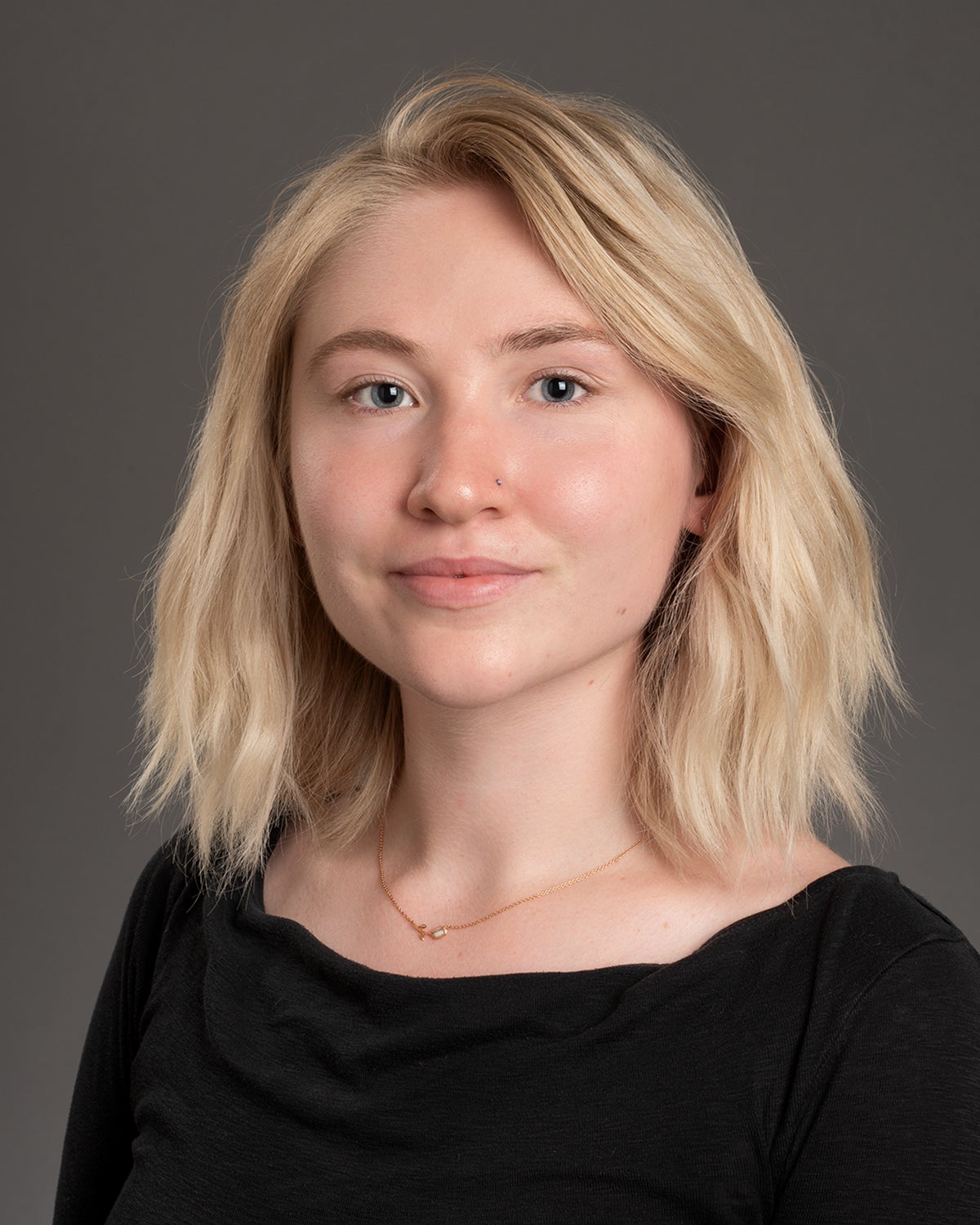
Anna Shuey
Ph.D. Candidate
Advisor: Dr. Owen McDougal, Department of Chemistry & Biochemistry
Kratom is a federally unregulated and increasingly popular herbal supplement that is marketed as a safer and more natural alternative to opioids. These opiate-like effects are attributed to kratom’s alkaloid content in which over 50 types have been identified. However, only mitragynine and 7-hydroxymitragynine have been extensively studied. My research focuses on quantifying variation in the alkaloid content of commercially available kratom products via HPLC (high performance liquid chromatography). Additionally, I will be exploring the biologic effects of various minor indole and oxindole alkaloids identified in kratom by developing a pharmacokinetic profile. Our goal is to inform future legislation as kratom’s influence over consumers continues to grow.
Cohort 11Advisor: Dr. Owen McDougal, Department of Chemistry & Biochemistry
Kratom is a federally unregulated and increasingly popular herbal supplement that is marketed as a safer and more natural alternative to opioids. These opiate-like effects are attributed to kratom’s alkaloid content in which over 50 types have been identified. However, only mitragynine and 7-hydroxymitragynine have been extensively studied. My research focuses on quantifying variation in the alkaloid content of commercially available kratom products via HPLC (high performance liquid chromatography). Additionally, I will be exploring the biologic effects of various minor indole and oxindole alkaloids identified in kratom by developing a pharmacokinetic profile. Our goal is to inform future legislation as kratom’s influence over consumers continues to grow.
-
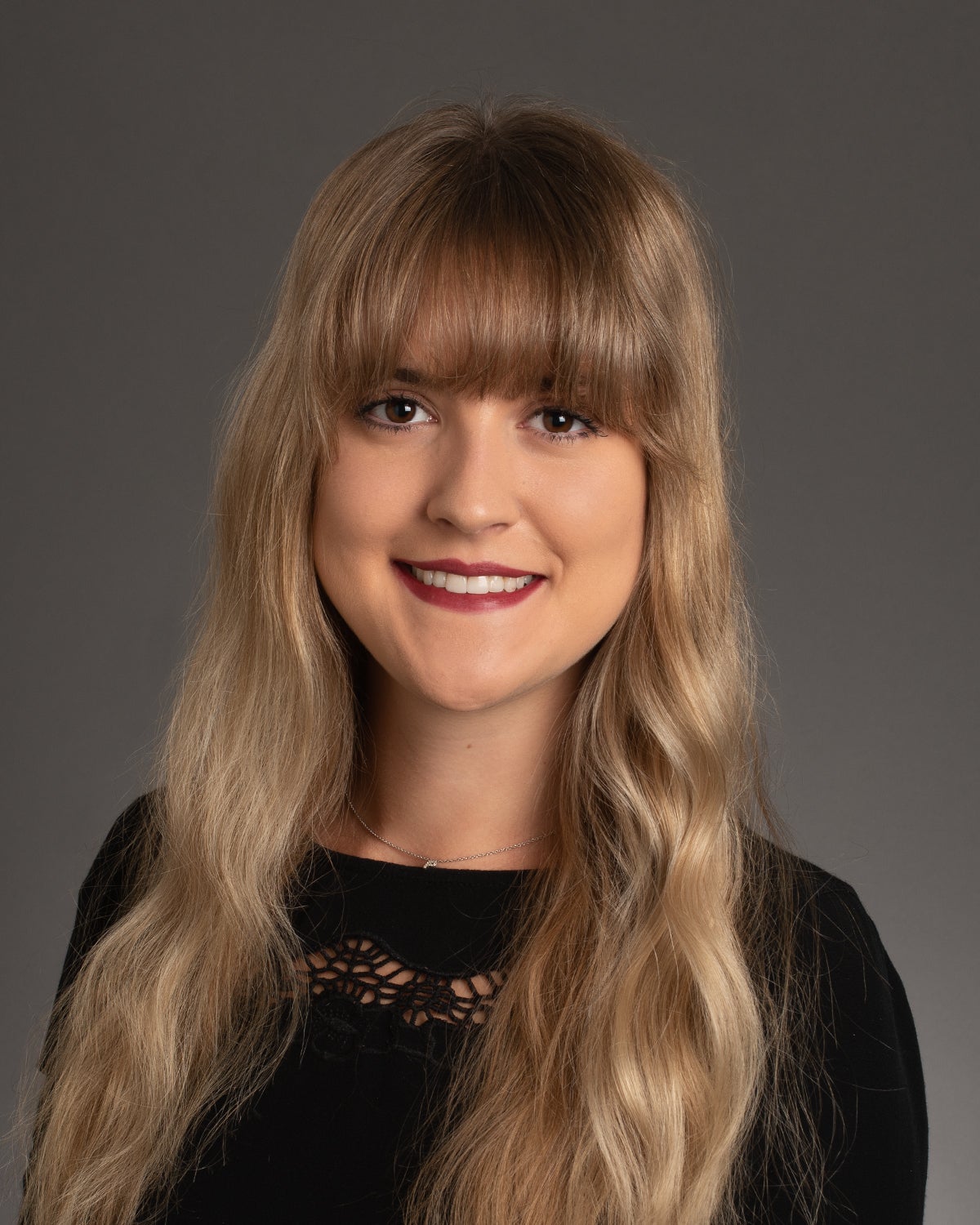
Paige Skinner
Ph.D. Candidate
Co-Advisors: Dr. Eric Hayden, Department of Biological Sciences & Dr. Sven Buerki, Department of Biological Sciences
My research involves studying the biomolecular mechanisms that underpin phenotypic plasticity in response to environmental stressors within the keystone species, Artemisia tridentata, also known as sagebrush. Utilizing a genotype by environment experiment we subjected sagebrush clones to drought and heat conditions to model the increased severe weather events due to climate change. Through analyzing the changes in gene expression, levels of microRNA, genome rearrangements and cis-regulatory elements within the differentially expressed genes I hope to gain an understanding on how this ancient species regulates its genome in response to stress.
Cohort 11Co-Advisors: Dr. Eric Hayden, Department of Biological Sciences & Dr. Sven Buerki, Department of Biological Sciences
My research involves studying the biomolecular mechanisms that underpin phenotypic plasticity in response to environmental stressors within the keystone species, Artemisia tridentata, also known as sagebrush. Utilizing a genotype by environment experiment we subjected sagebrush clones to drought and heat conditions to model the increased severe weather events due to climate change. Through analyzing the changes in gene expression, levels of microRNA, genome rearrangements and cis-regulatory elements within the differentially expressed genes I hope to gain an understanding on how this ancient species regulates its genome in response to stress.
-

Krystal Sosa
Ph.D. Candidate
Advisor: Dr. Ken Cornell, Department of Chemistry & Biochemistry
My research focuses on the antiviral effects of the Cold Atmospheric Pressure plasma array (CAP-array). I currently study two surrogate viruses, Human Coronavirus-229E (HCOV-229E) and Feline Calicivirus (FeCalV) that model Severe Acute Respiratory Syndrome Coronavirus 2 (SARS-CoV-2). CAP-array has been shown to safely and effectively treat a variety of surfaces contaminated by viruses and bacteria. The efficiency of CAP is due to its ability to create reactive oxygen and nitrogen species (RONS). These bioactive species mediate chemical changes to nucleic acids, lipids and proteins. I aim to investigate the molecular mechanism, by which CAP-array exerts its virucidal effects.
Cohort 10Advisor: Dr. Ken Cornell, Department of Chemistry & Biochemistry
My research focuses on the antiviral effects of the Cold Atmospheric Pressure plasma array (CAP-array). I currently study two surrogate viruses, Human Coronavirus-229E (HCOV-229E) and Feline Calicivirus (FeCalV) that model Severe Acute Respiratory Syndrome Coronavirus 2 (SARS-CoV-2). CAP-array has been shown to safely and effectively treat a variety of surfaces contaminated by viruses and bacteria. The efficiency of CAP is due to its ability to create reactive oxygen and nitrogen species (RONS). These bioactive species mediate chemical changes to nucleic acids, lipids and proteins. I aim to investigate the molecular mechanism, by which CAP-array exerts its virucidal effects.
-
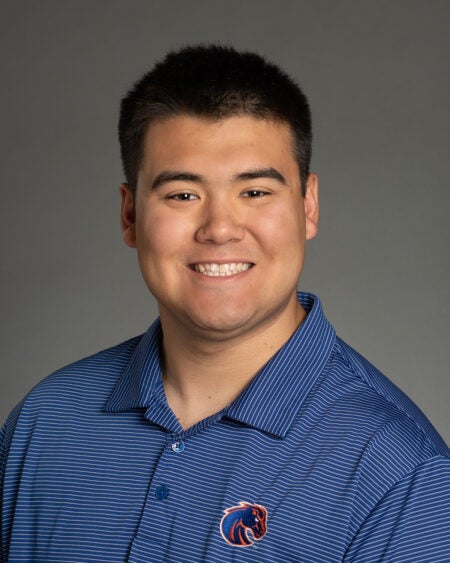
Noah Souza
Ph.D. Candidate
Advisor: Dr. Juliette Tinker, Department of Biological Sciences
My research focuses on an AB5 toxin called ‘ArtAB’, which originates from Salmonella enterica serovar Typhimurium phage type DT104. DT104 strains are heavily antibiotic resistant and infect both humans and animals. I plan on understanding how ArtAB contributes to Salmonella pathogenesis, such as how it acts as an enterotoxin and immunomodulator. This will include investigating ArtB (the B-subunit alone) for potential antigenicity and adjuvanticity.
Cohort 10Advisor: Dr. Juliette Tinker, Department of Biological Sciences
My research focuses on an AB5 toxin called ‘ArtAB’, which originates from Salmonella enterica serovar Typhimurium phage type DT104. DT104 strains are heavily antibiotic resistant and infect both humans and animals. I plan on understanding how ArtAB contributes to Salmonella pathogenesis, such as how it acts as an enterotoxin and immunomodulator. This will include investigating ArtB (the B-subunit alone) for potential antigenicity and adjuvanticity.
-
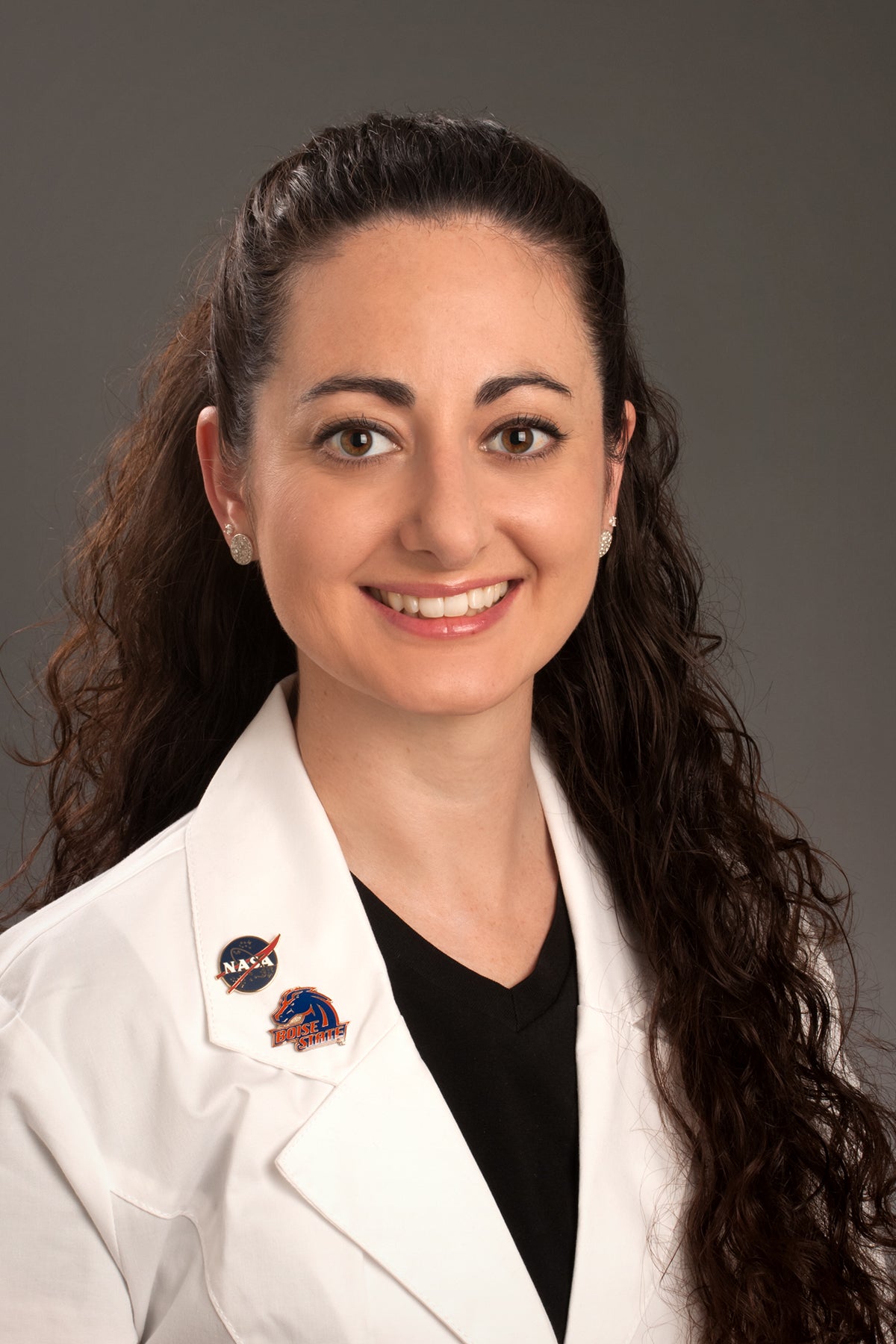
Stephanie Tuft
Ph.D. Candidate
Advisor: Dr. Julia Oxford, Department of Biological Sciences
My current research is focused on investigating the association between the TGF-β signaling pathway, epithelial to mesenchymal transition (EMT) and long non-coding RNAs (LncRNAs) in conjunctival epithelial cells. Ocular fibrosis, specifically conjunctival fibrosis, remains one of the largest areas of unmet need in ophthalmology and is the greatest obstacle to a successful glaucoma filtration surgery. Previous research investigated creating biomimetic models of wound healing ligament, recellularizing bone ECM bioscaffolds and seeding mouse muscle cells on to graphene film (2D) and graphene foam (3D). These biomimetic models could serve as a platform to investigating treatments for soft tissue injuries.
Cohort 7Advisor: Dr. Julia Oxford, Department of Biological Sciences
My current research is focused on investigating the association between the TGF-β signaling pathway, epithelial to mesenchymal transition (EMT) and long non-coding RNAs (LncRNAs) in conjunctival epithelial cells. Ocular fibrosis, specifically conjunctival fibrosis, remains one of the largest areas of unmet need in ophthalmology and is the greatest obstacle to a successful glaucoma filtration surgery. Previous research investigated creating biomimetic models of wound healing ligament, recellularizing bone ECM bioscaffolds and seeding mouse muscle cells on to graphene film (2D) and graphene foam (3D). These biomimetic models could serve as a platform to investigating treatments for soft tissue injuries.
-
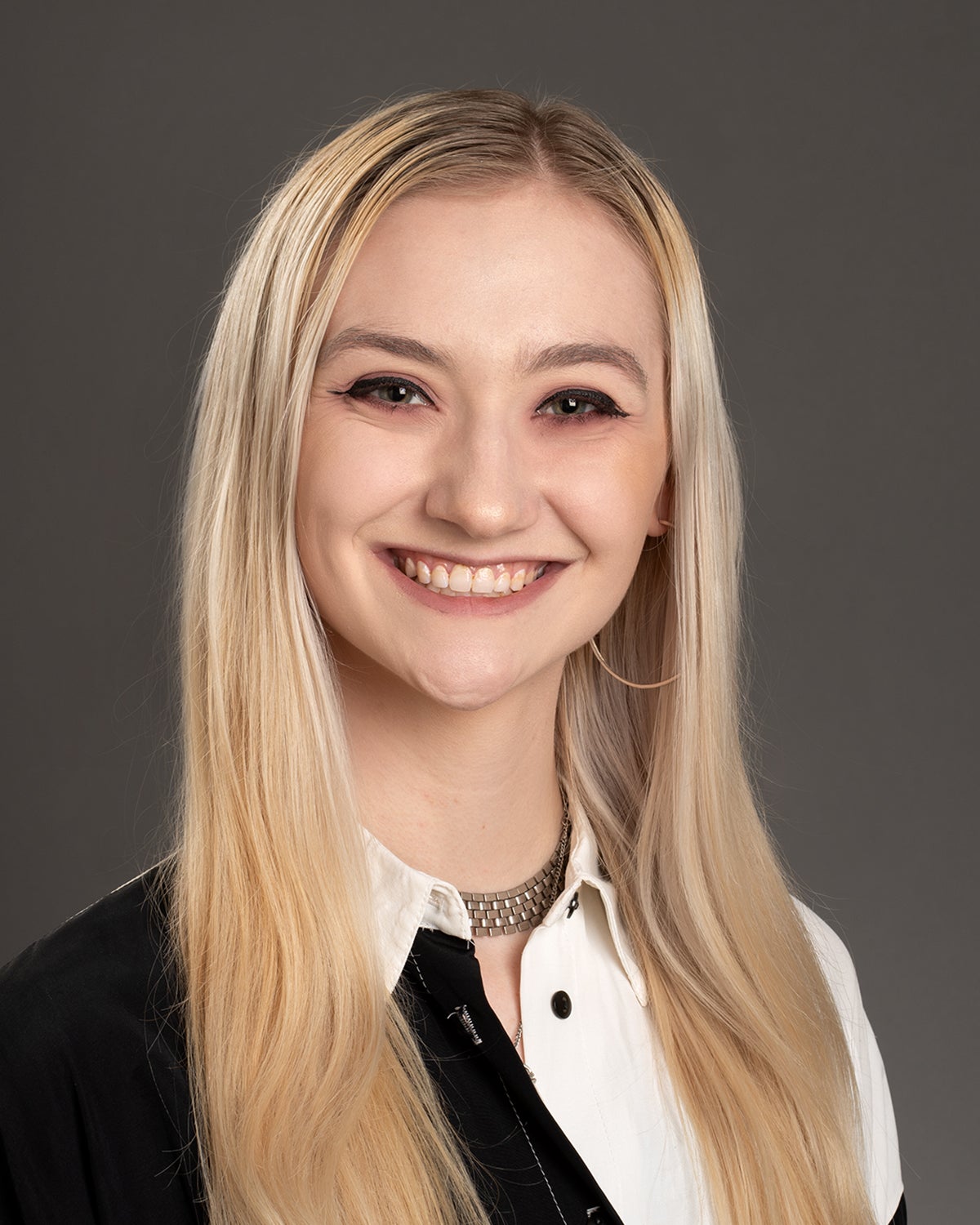
Trinidy Wood
Ph.D. Candidate
Advisor: Dr. Jay Radke, Boise VA Medical Center
My research pertains to investigating the differences in alveolar macrophage (AM) inflammatory responses from Adenovirus 14 (Ad14) and an emergent strain Adenovirus 14p1 (Ad14p1) which can induce Acute Lung Injury (ALI) and progress to Acute Respiratory Distress Syndrome (ARDS). To investigate this, we use different biologically relevant MicroRNA (miRNA) in Ad14 and Ad14p1 to look at AM pro-inflammatory cytokine expression. I am currently examining 10 miRNAs that have biological relevance in the NF-κB dependent transcription pathway and with cytokines and chemokines. I also plan to use this project to help improve the Syrian Hamster model as an organism for studying viral pathogenesis including SARS-CoV-2.
Cohort 11Advisor: Dr. Jay Radke, Boise VA Medical Center
My research pertains to investigating the differences in alveolar macrophage (AM) inflammatory responses from Adenovirus 14 (Ad14) and an emergent strain Adenovirus 14p1 (Ad14p1) which can induce Acute Lung Injury (ALI) and progress to Acute Respiratory Distress Syndrome (ARDS). To investigate this, we use different biologically relevant MicroRNA (miRNA) in Ad14 and Ad14p1 to look at AM pro-inflammatory cytokine expression. I am currently examining 10 miRNAs that have biological relevance in the NF-κB dependent transcription pathway and with cytokines and chemokines. I also plan to use this project to help improve the Syrian Hamster model as an organism for studying viral pathogenesis including SARS-CoV-2.
-

Luke Woodbury
Ph.D. Student
Advisor: Dr. Julia Oxford, Department of Biological Sciences
Cohort 10Advisor: Dr. Julia Oxford, Department of Biological Sciences
Current M.S. Students
-
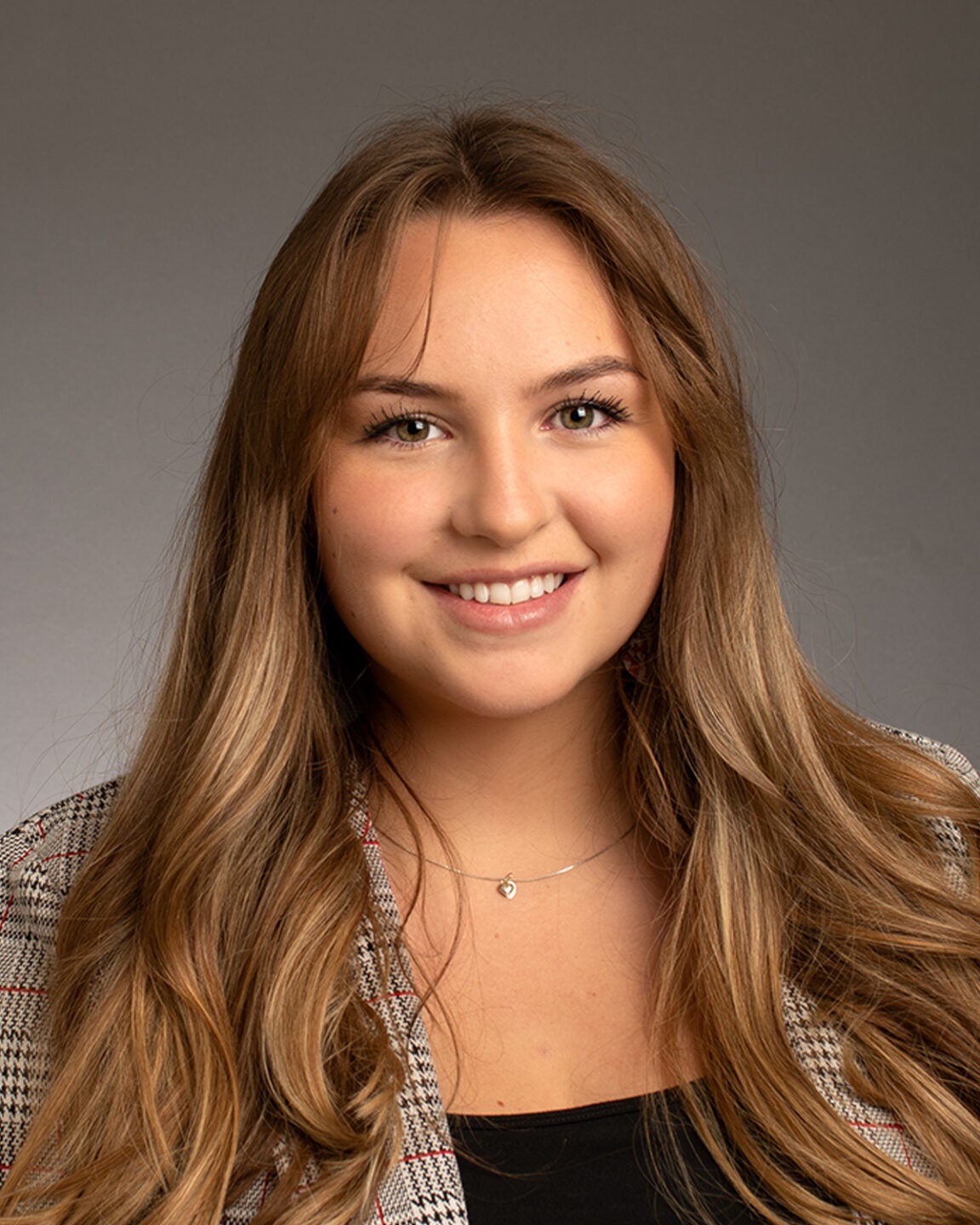
Hannah Hedelius
M.S. Students
Co-Advisors: Dr. Javier Ochoa-Repáraz, Department of Biological Sciences and Dr. Juliette Tinker, Department of Biological Sciences
Cohort 8Co-Advisors: Dr. Javier Ochoa-Repáraz, Department of Biological Sciences and Dr. Juliette Tinker, Department of Biological Sciences
-
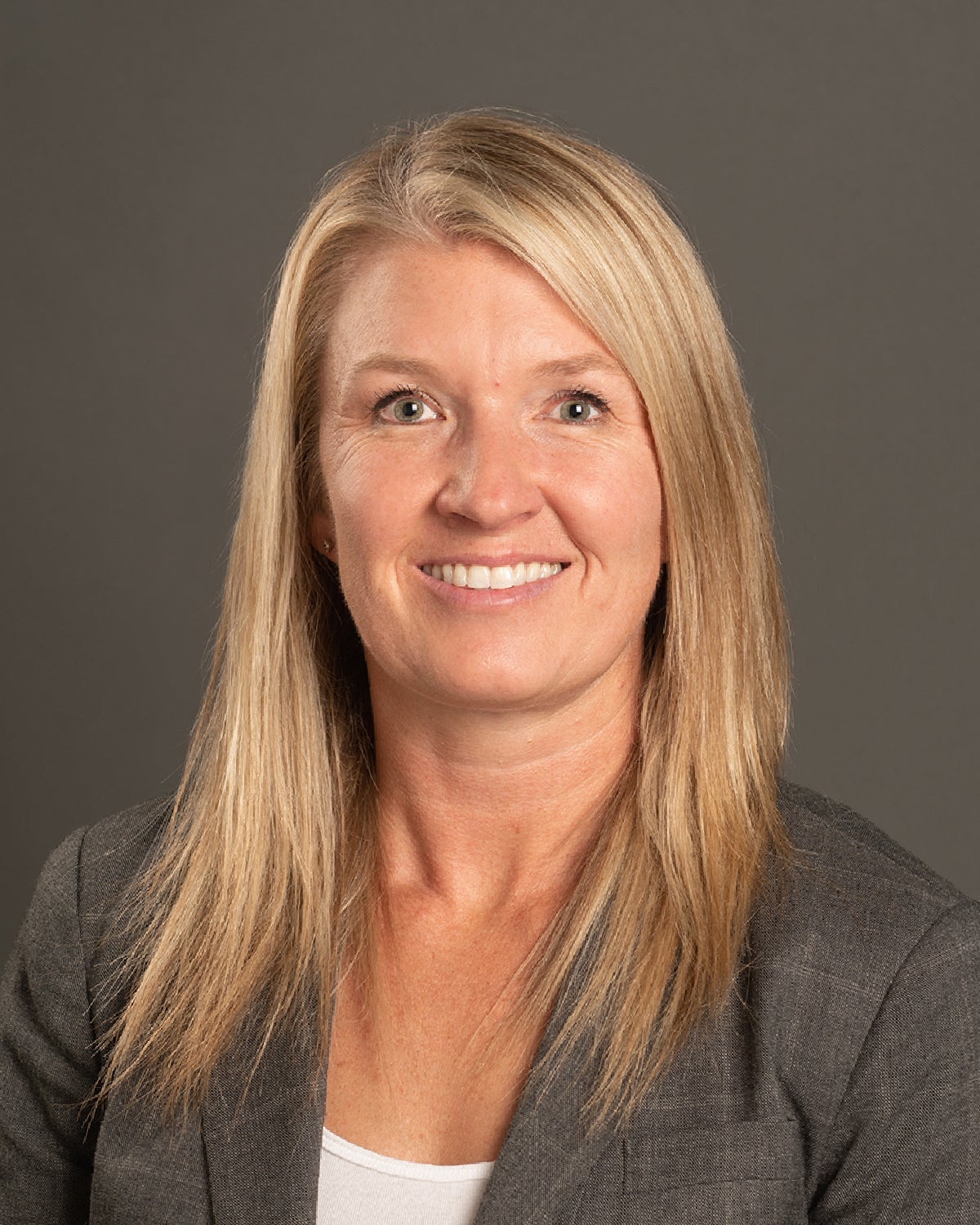
Natasha Wheatley
M.S. Student
Currently in Lab Rotations
Cohort 5Currently in Lab Rotations